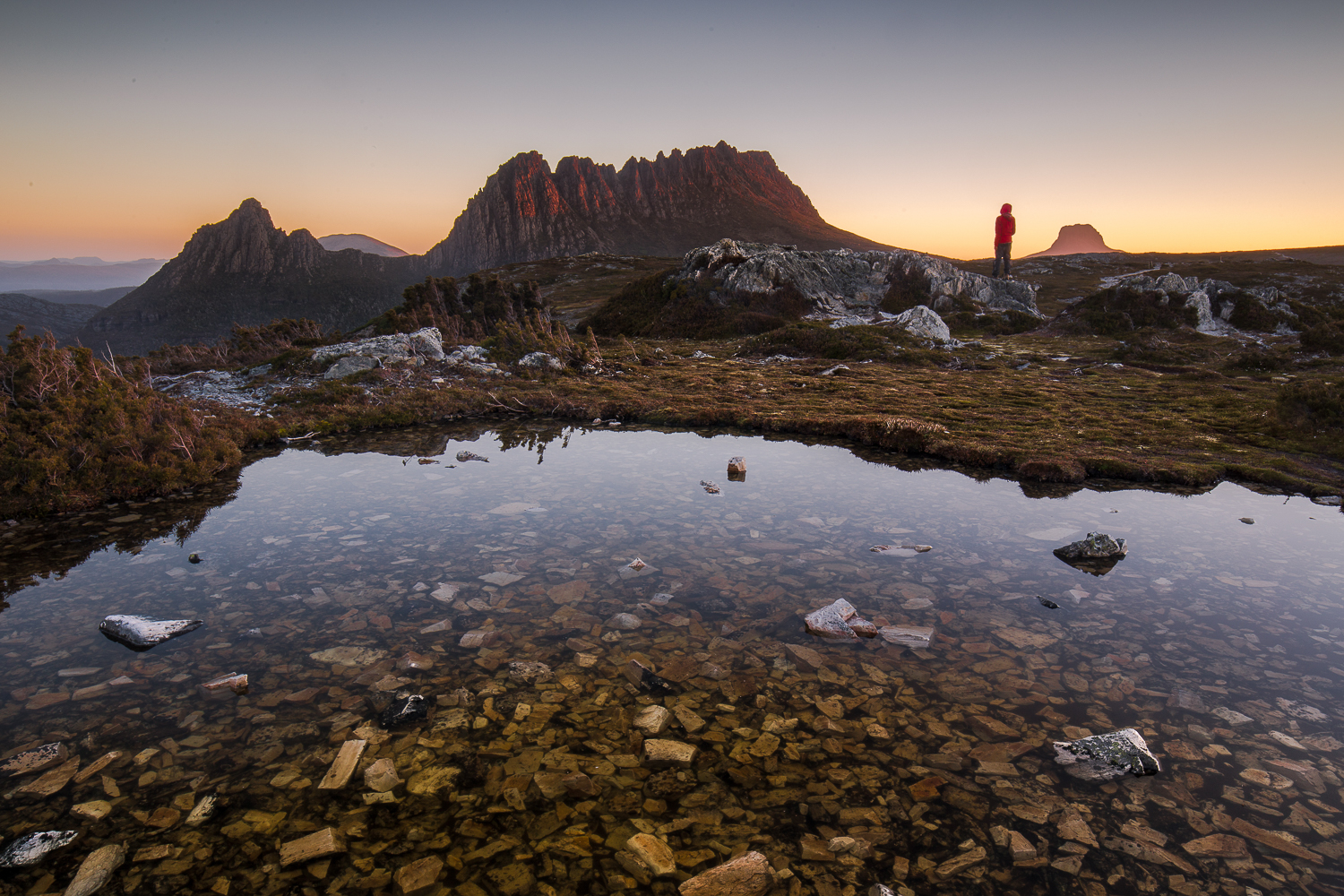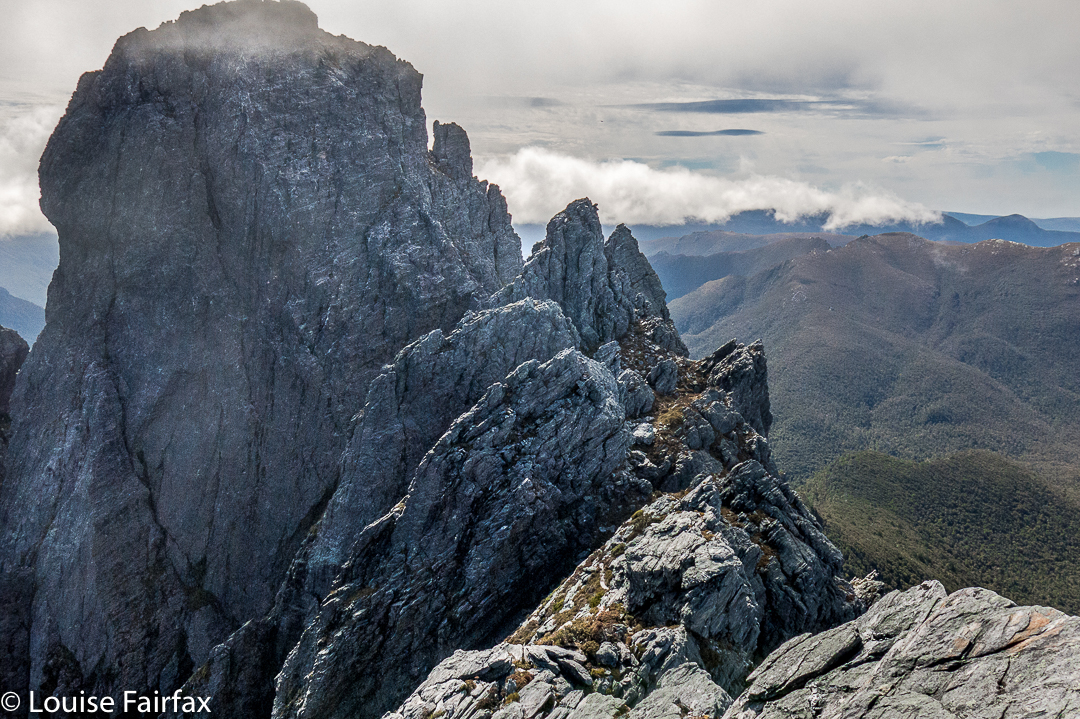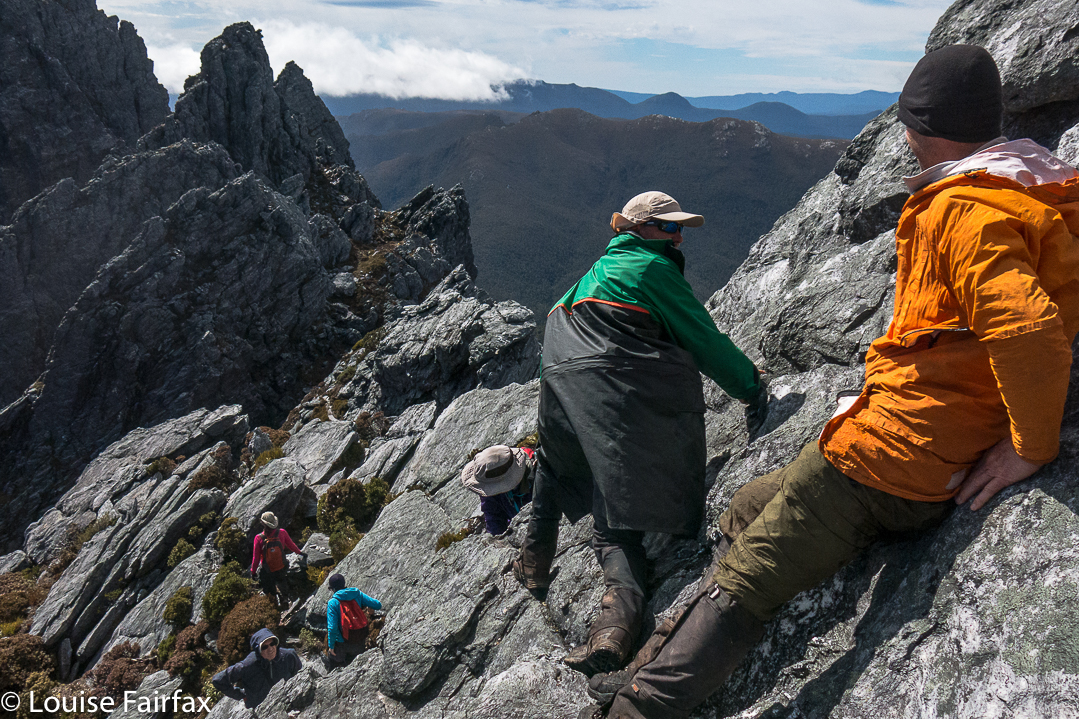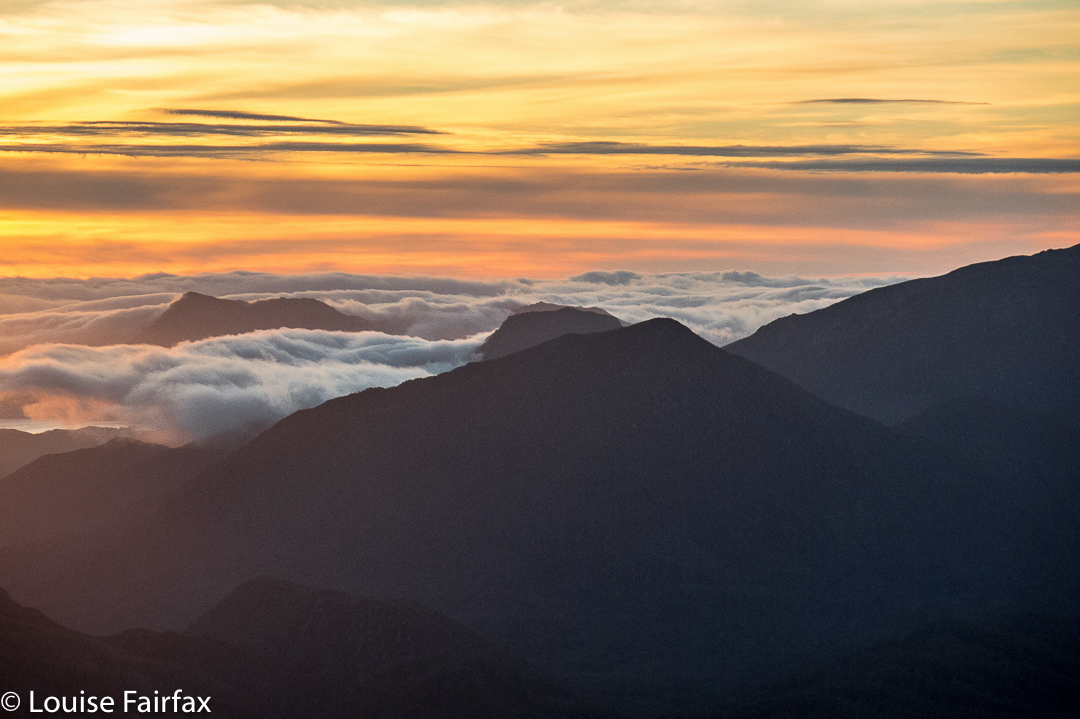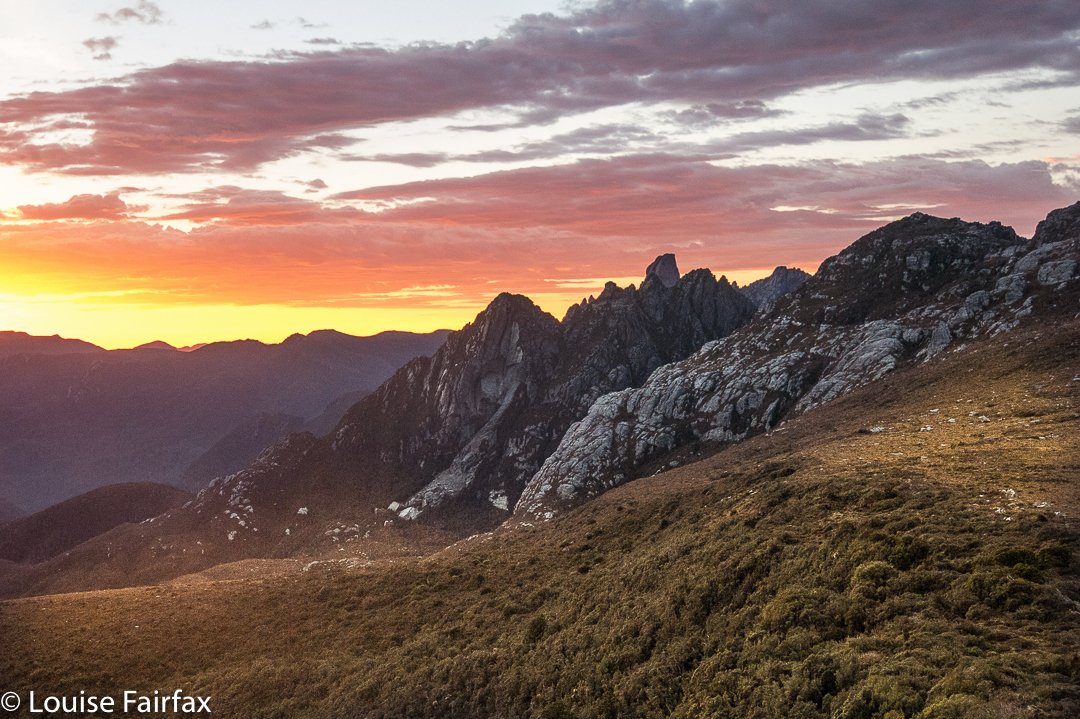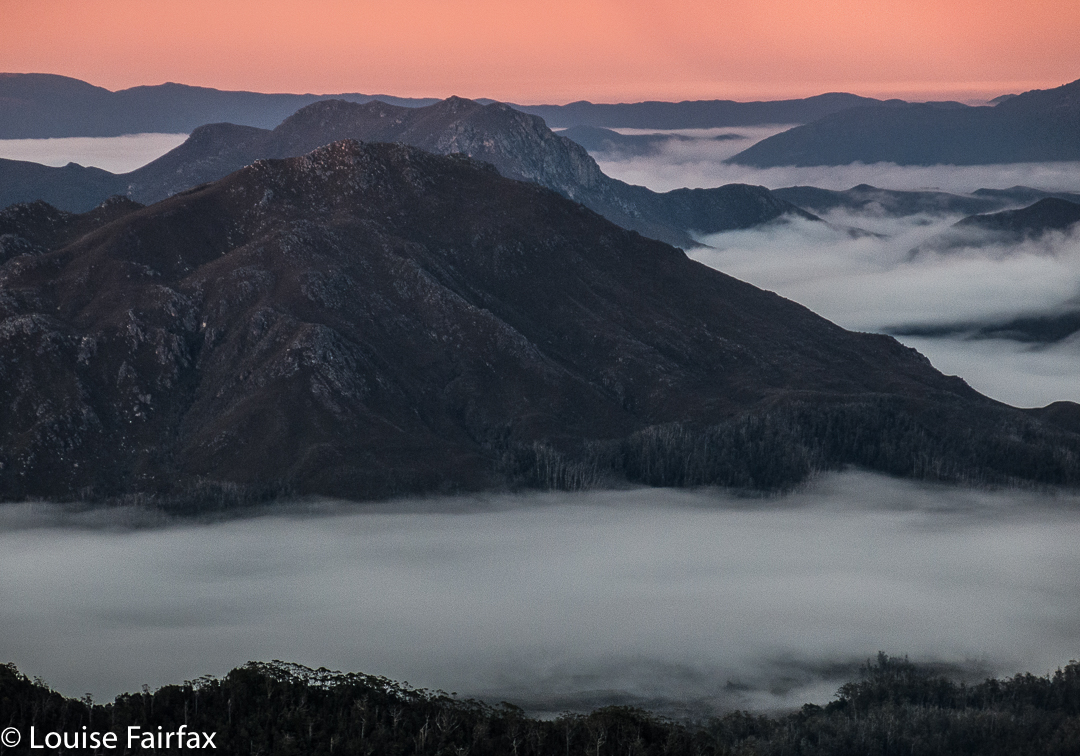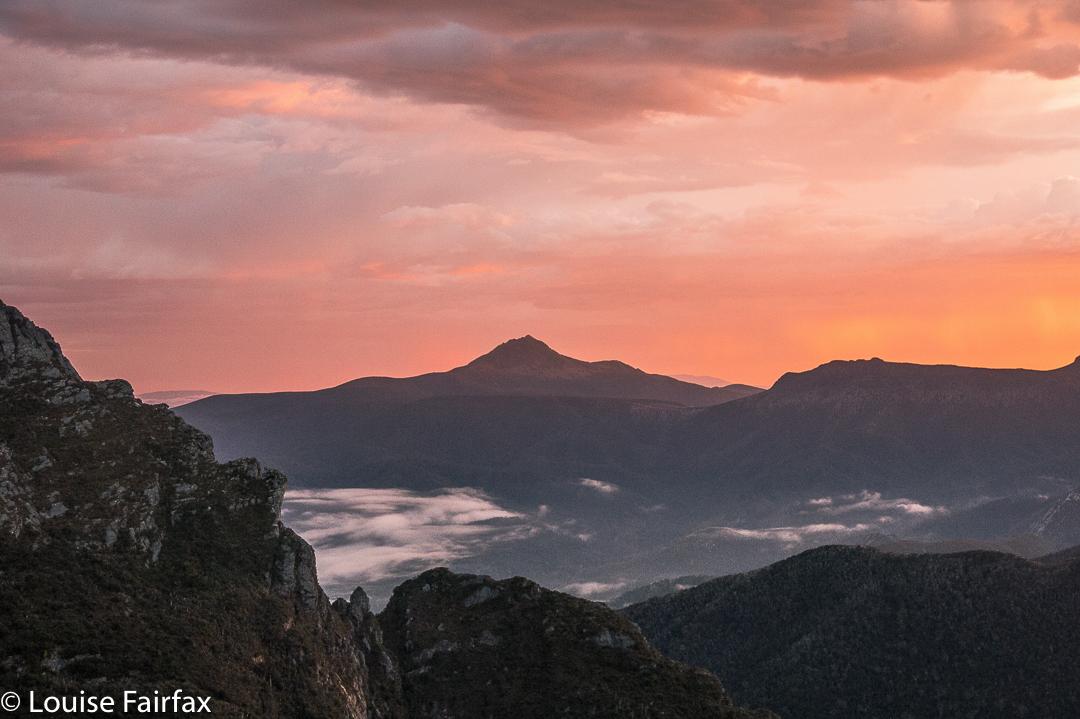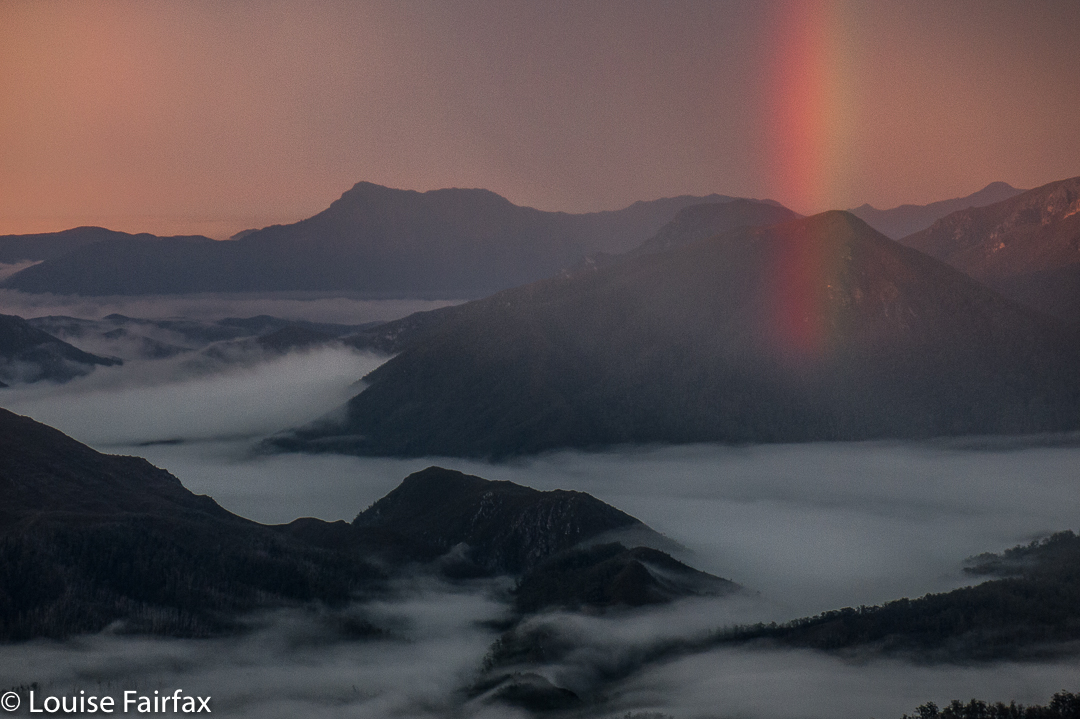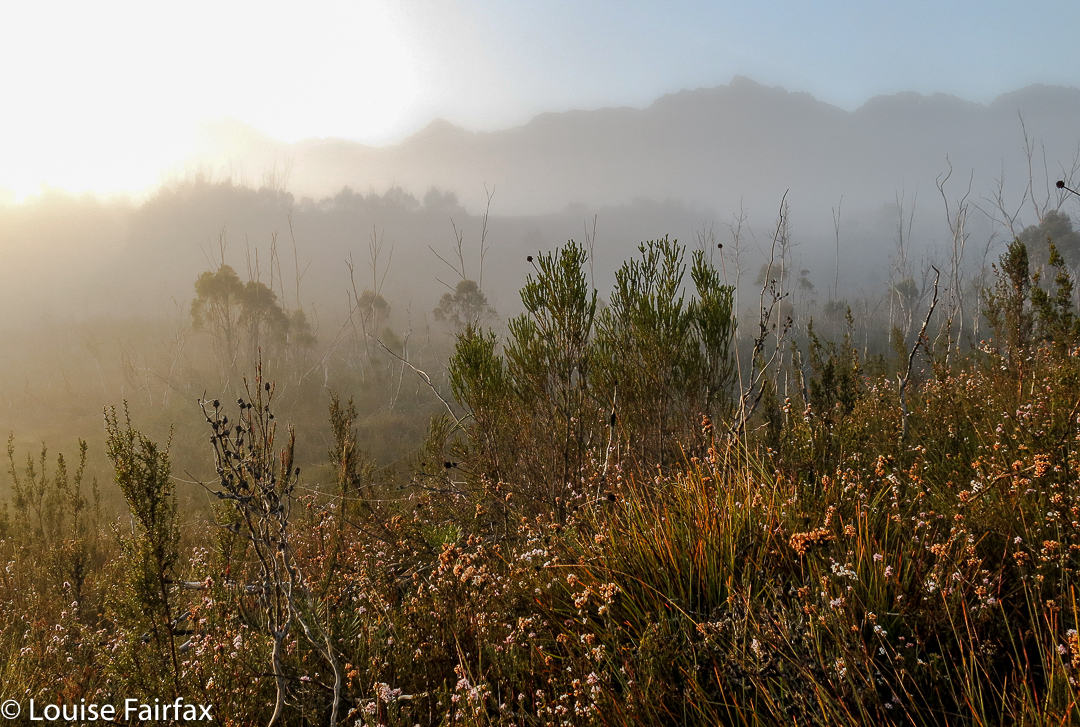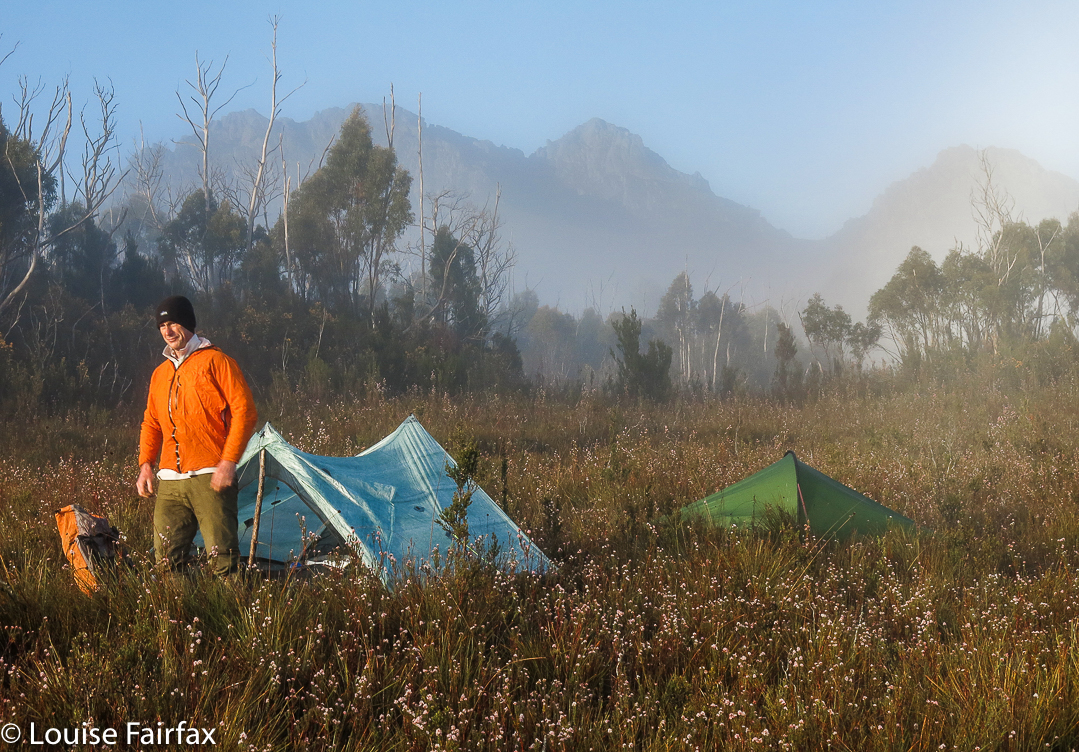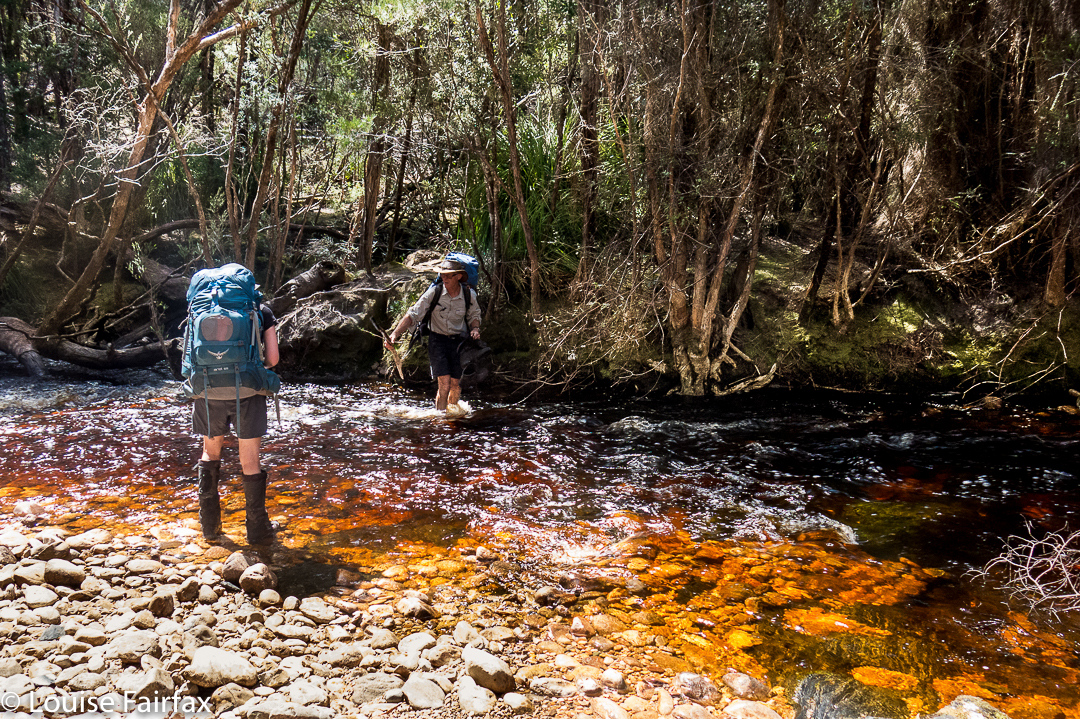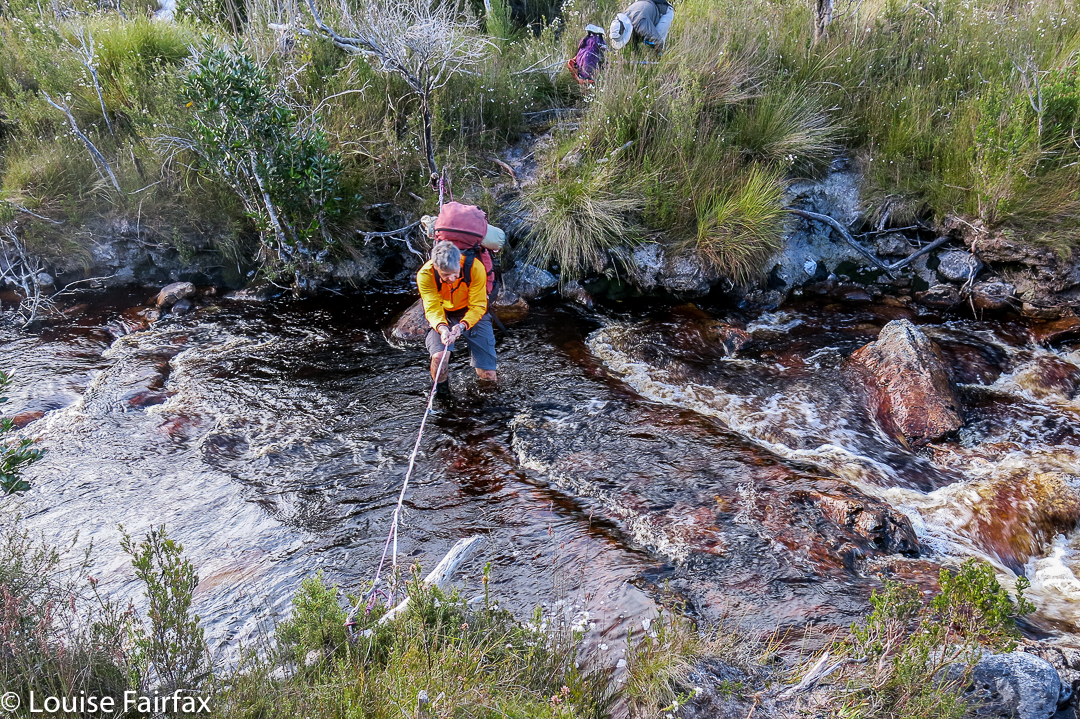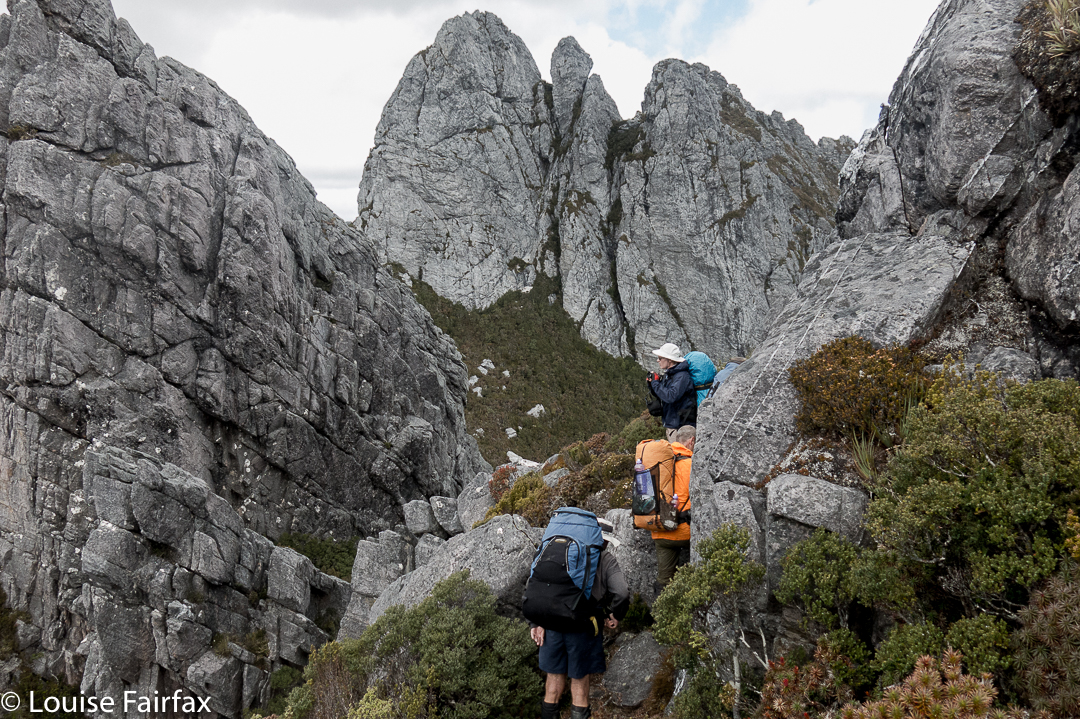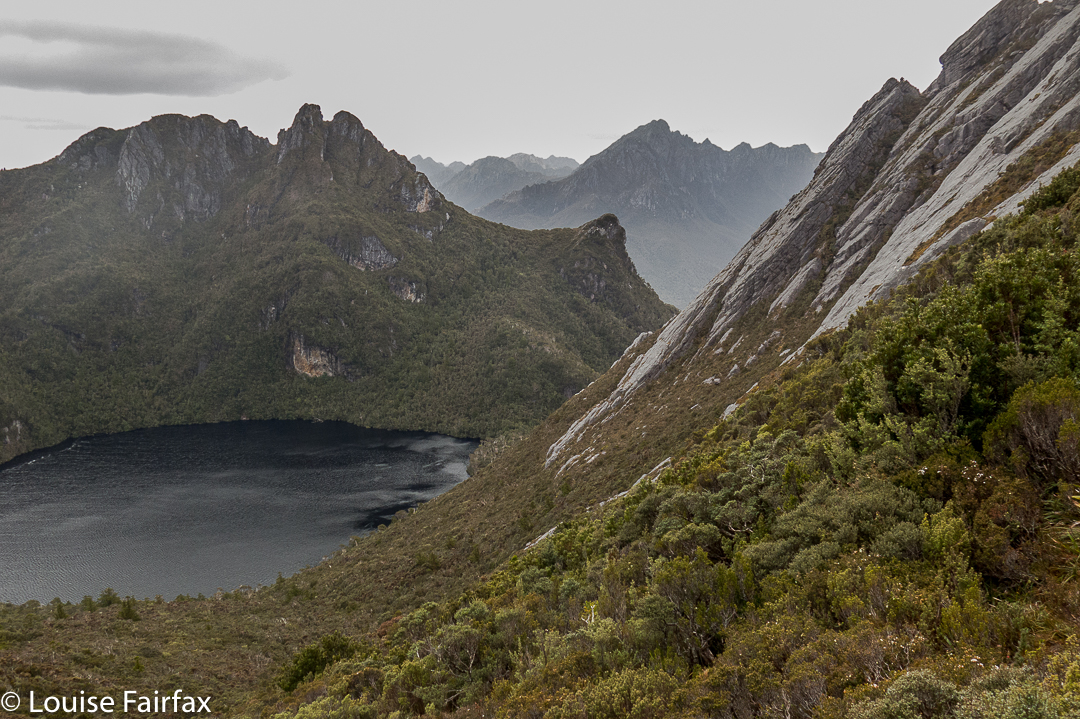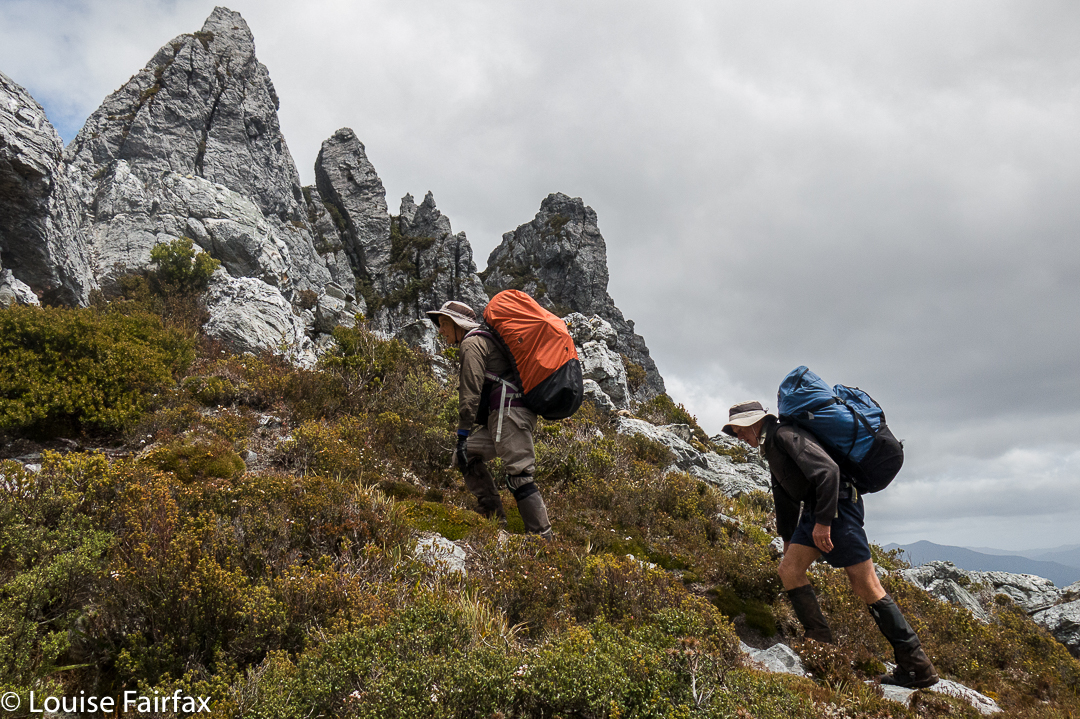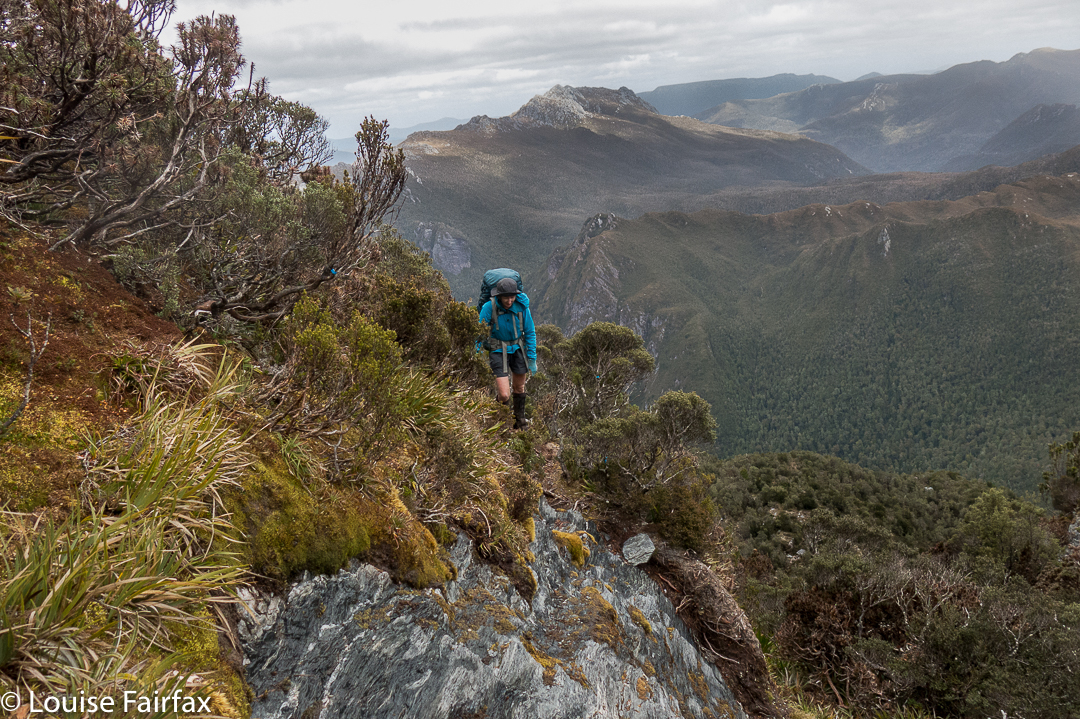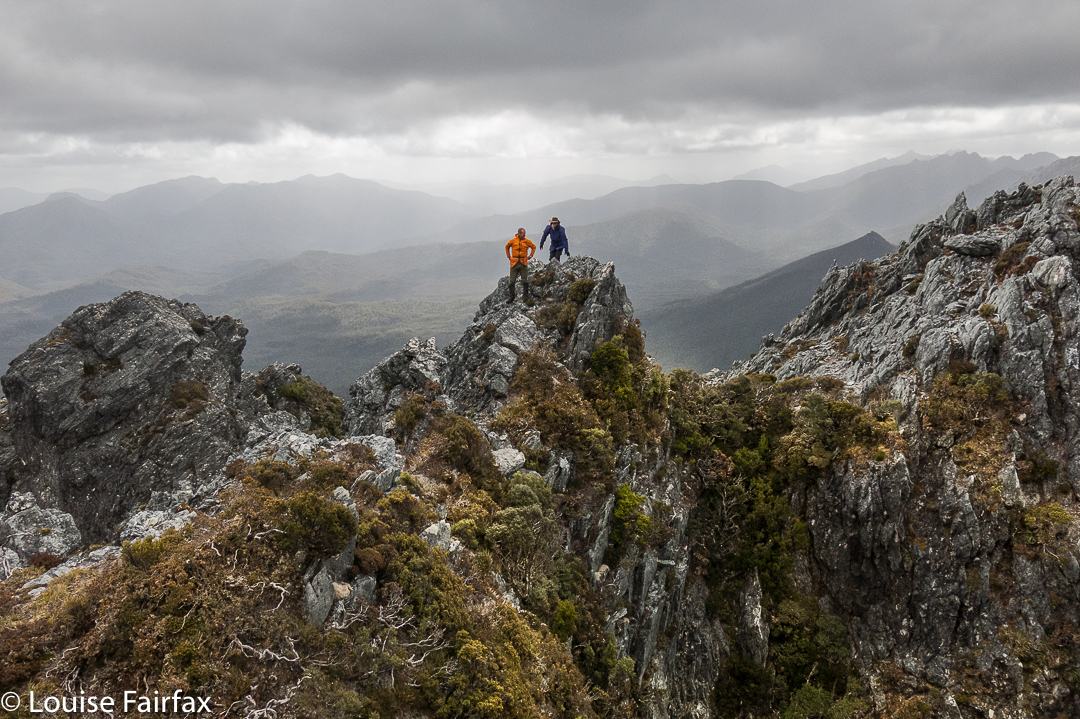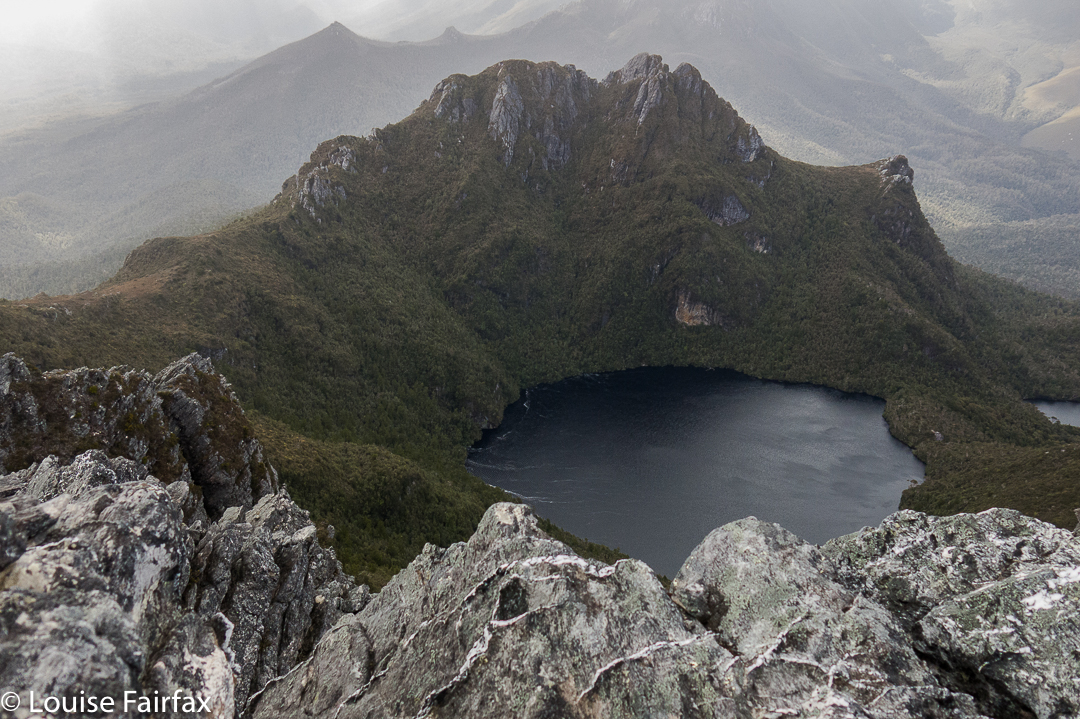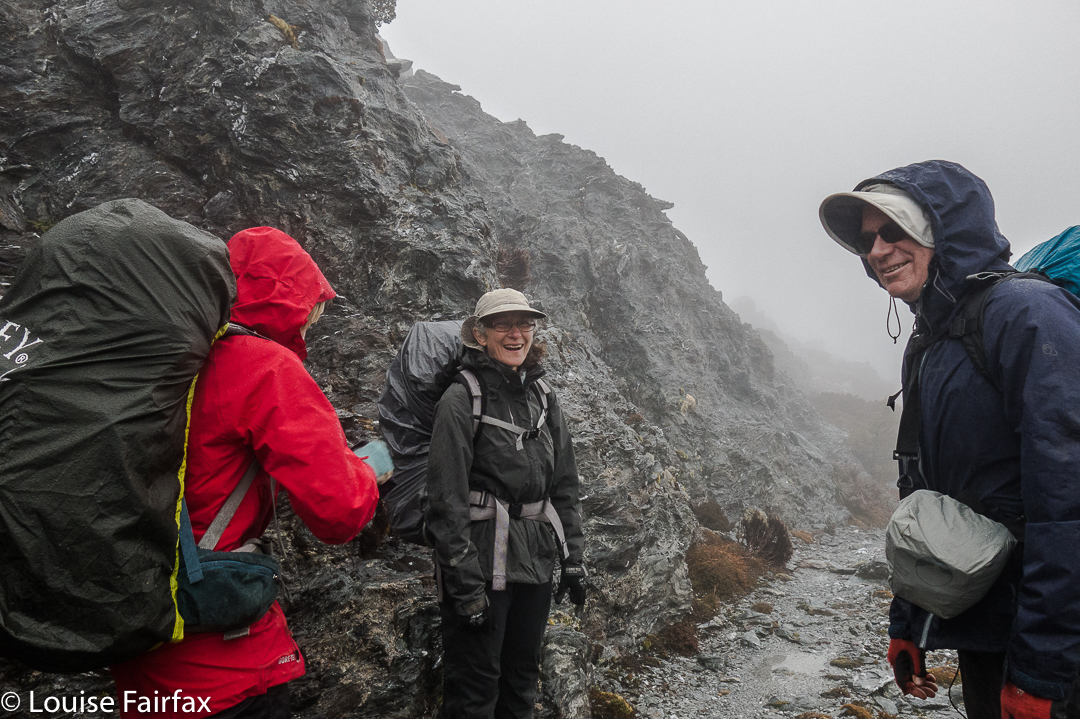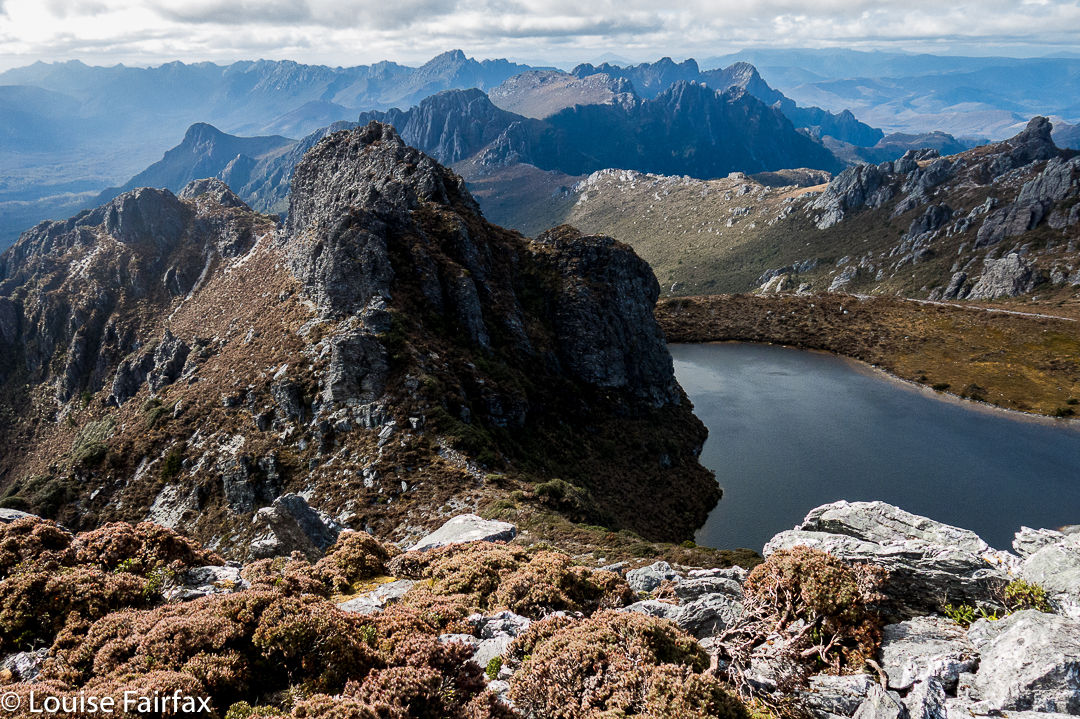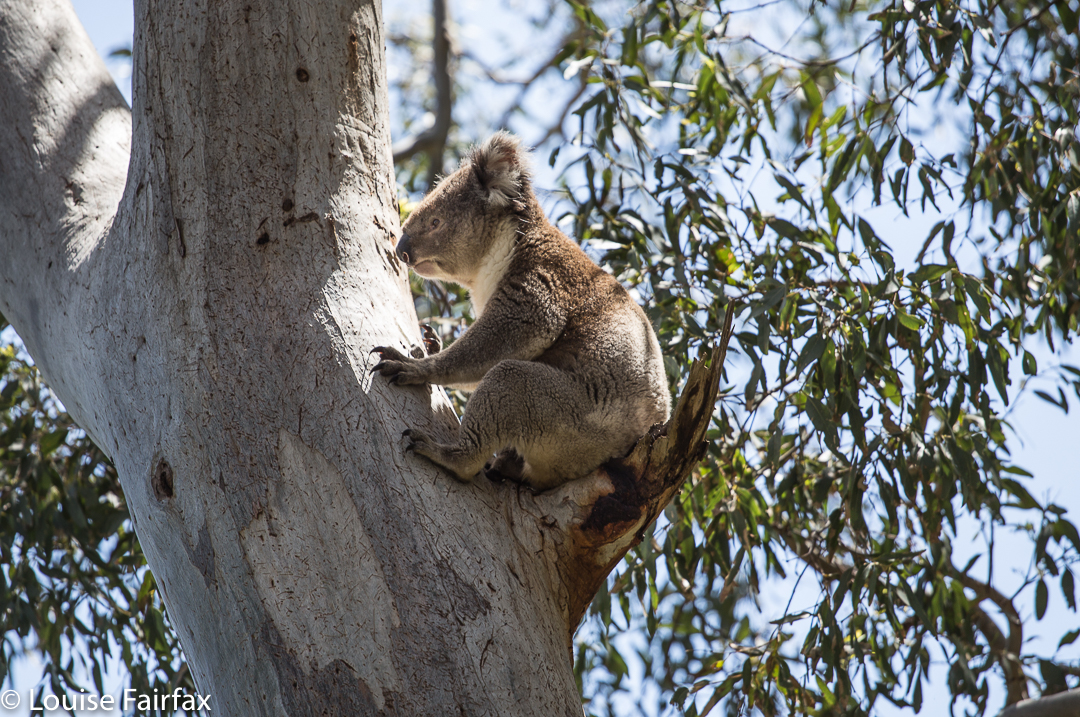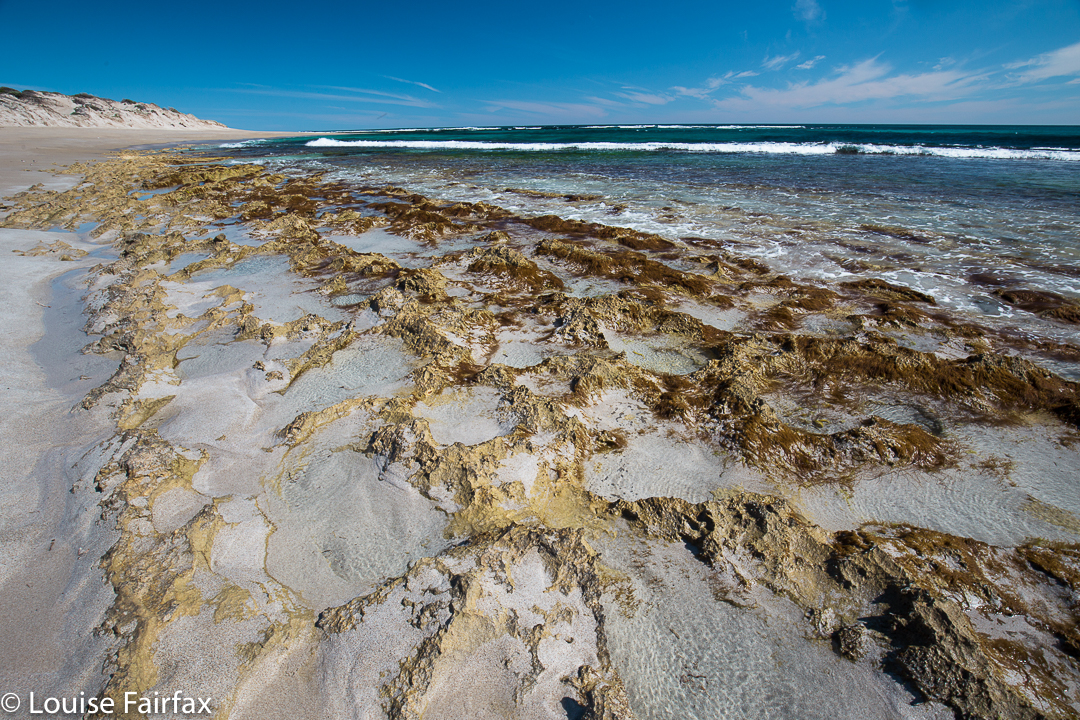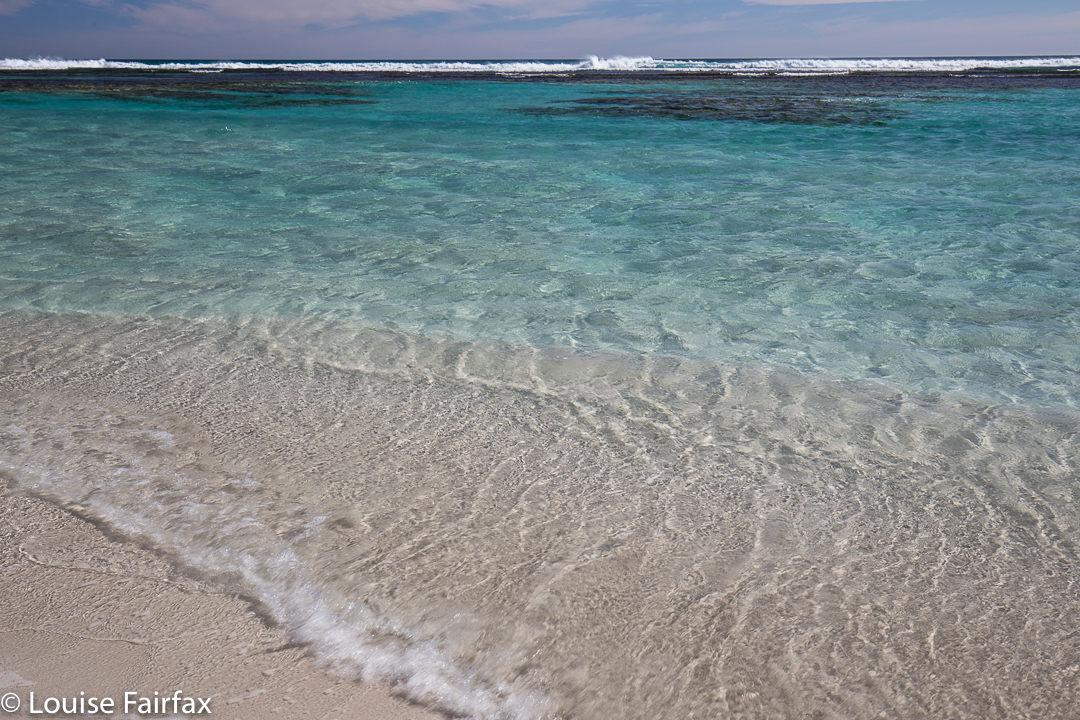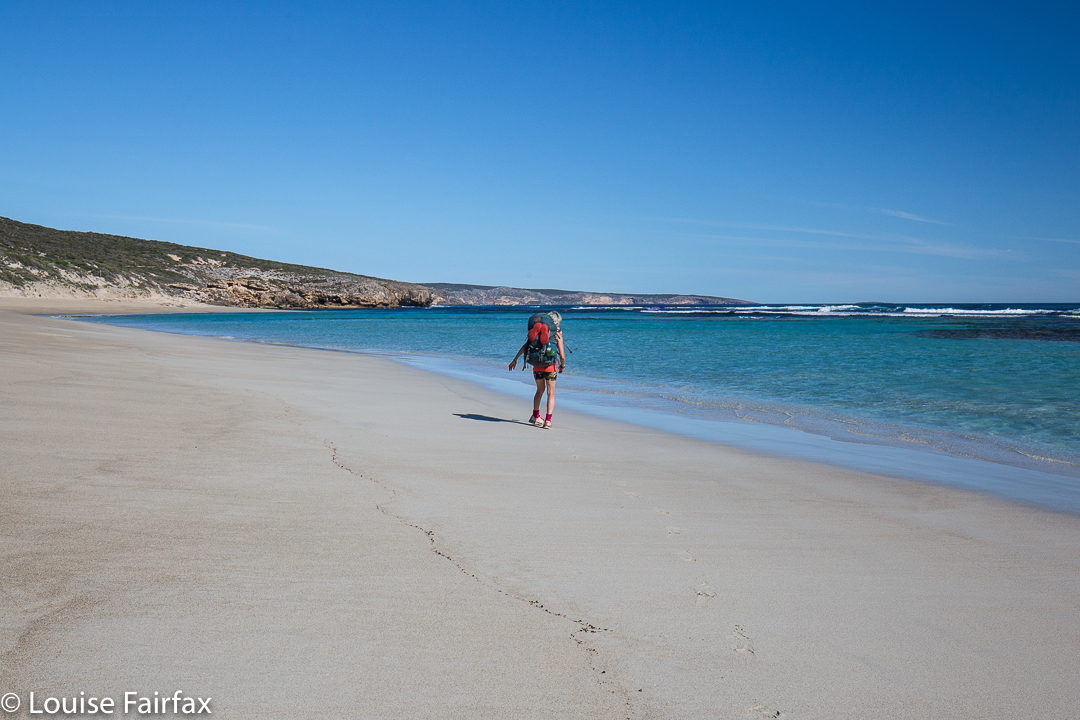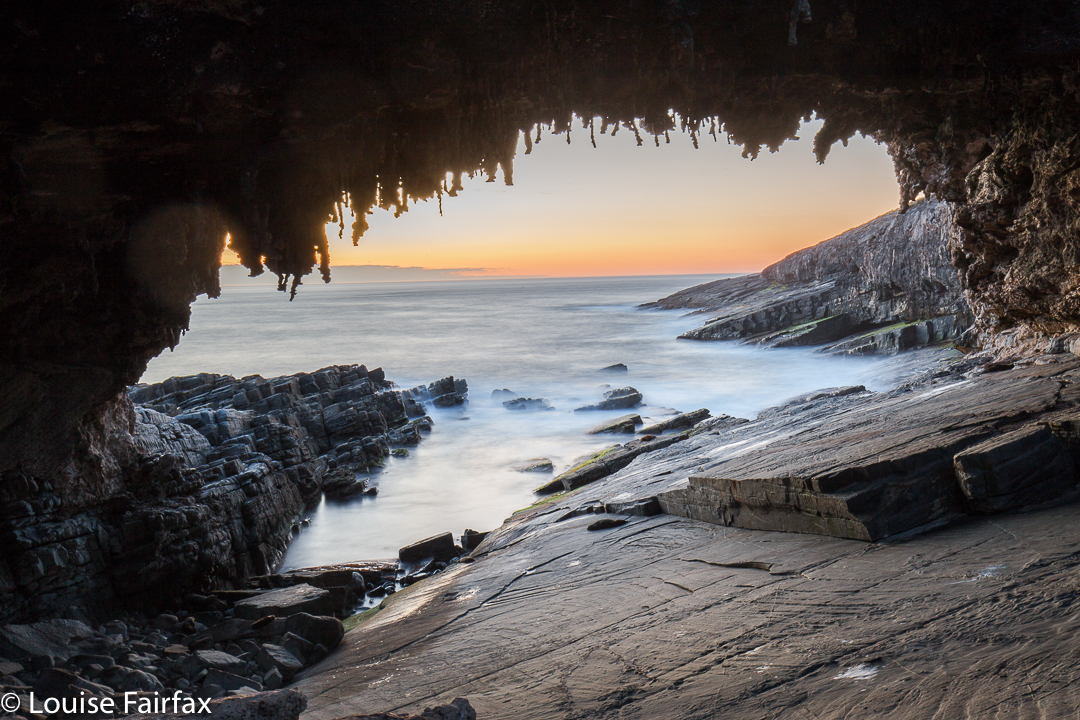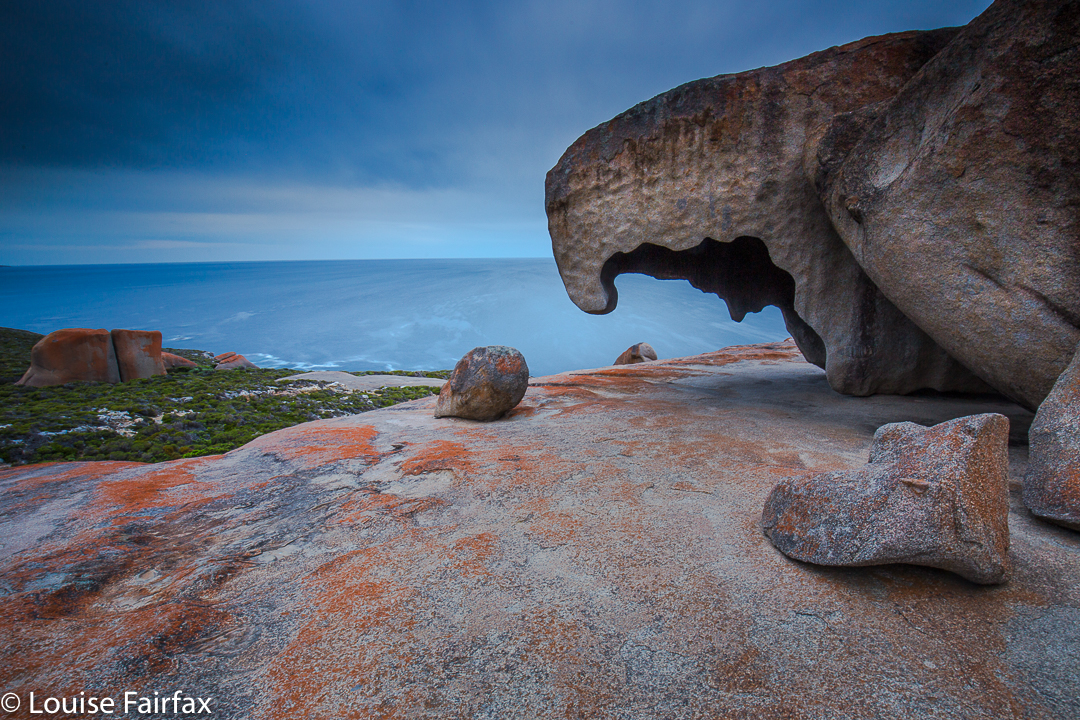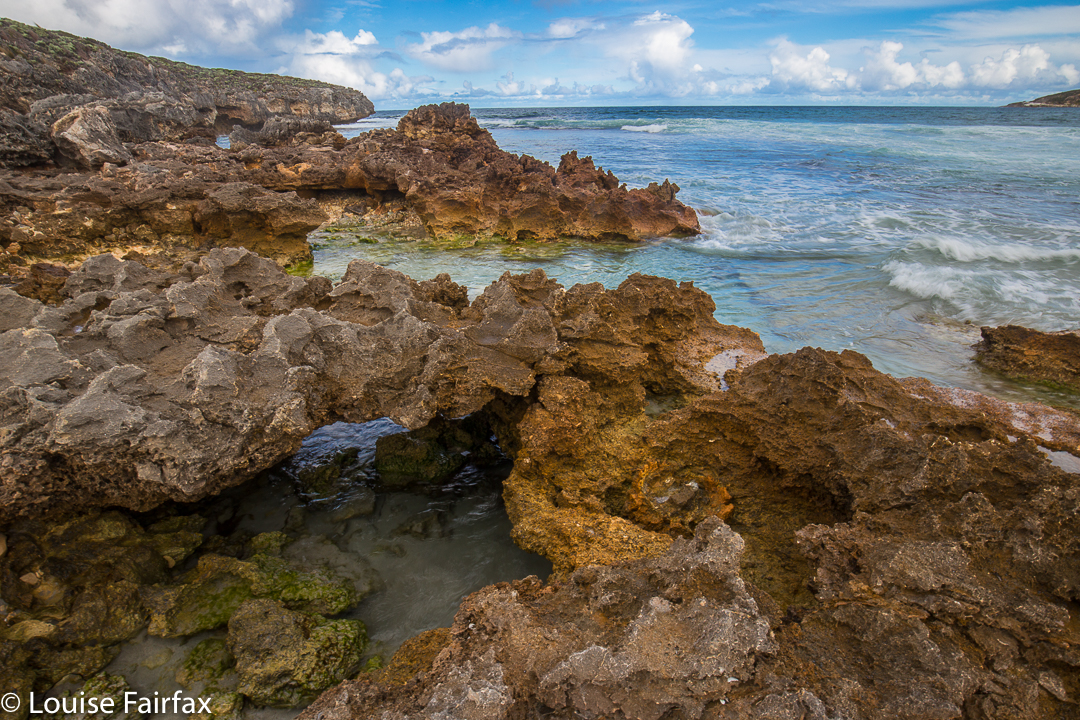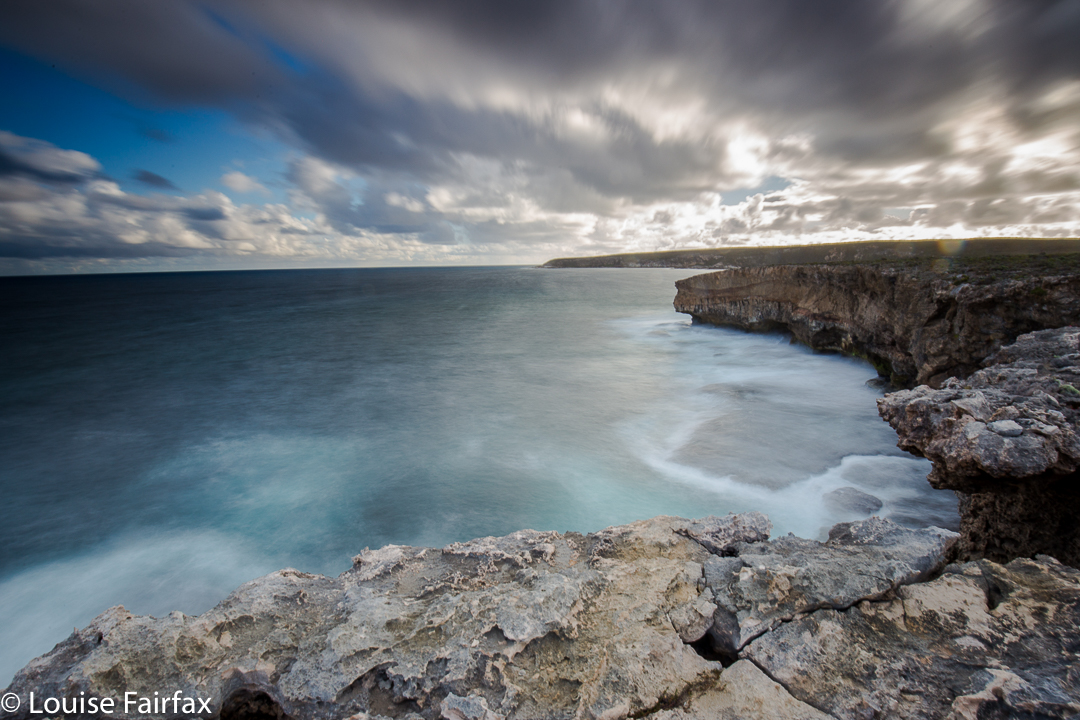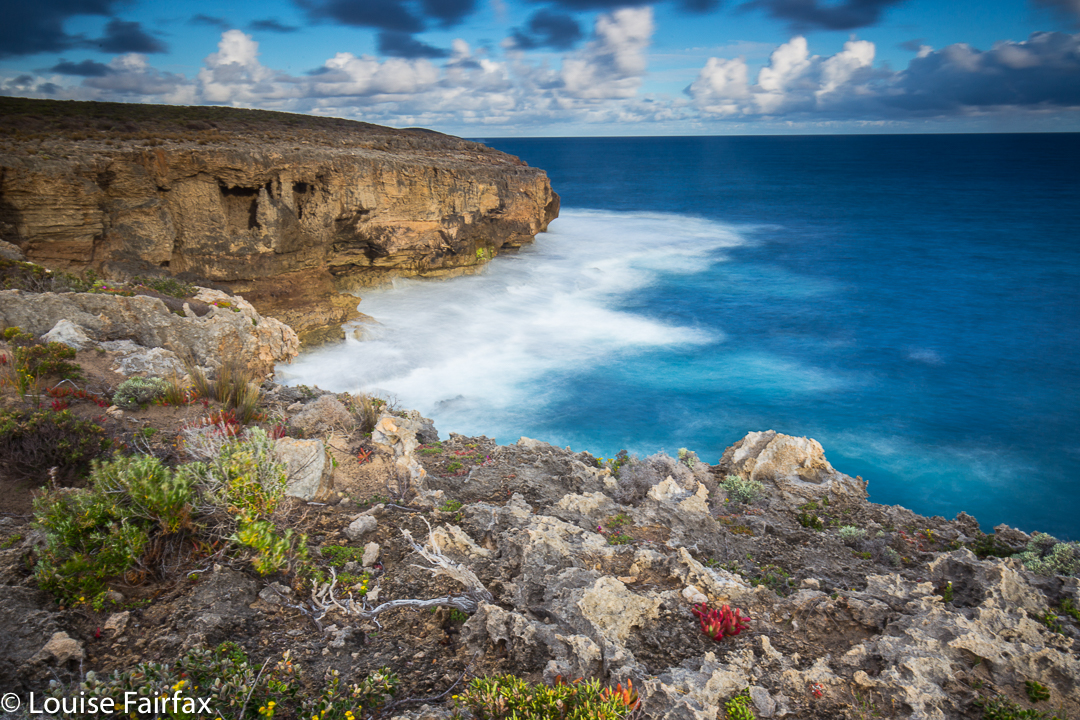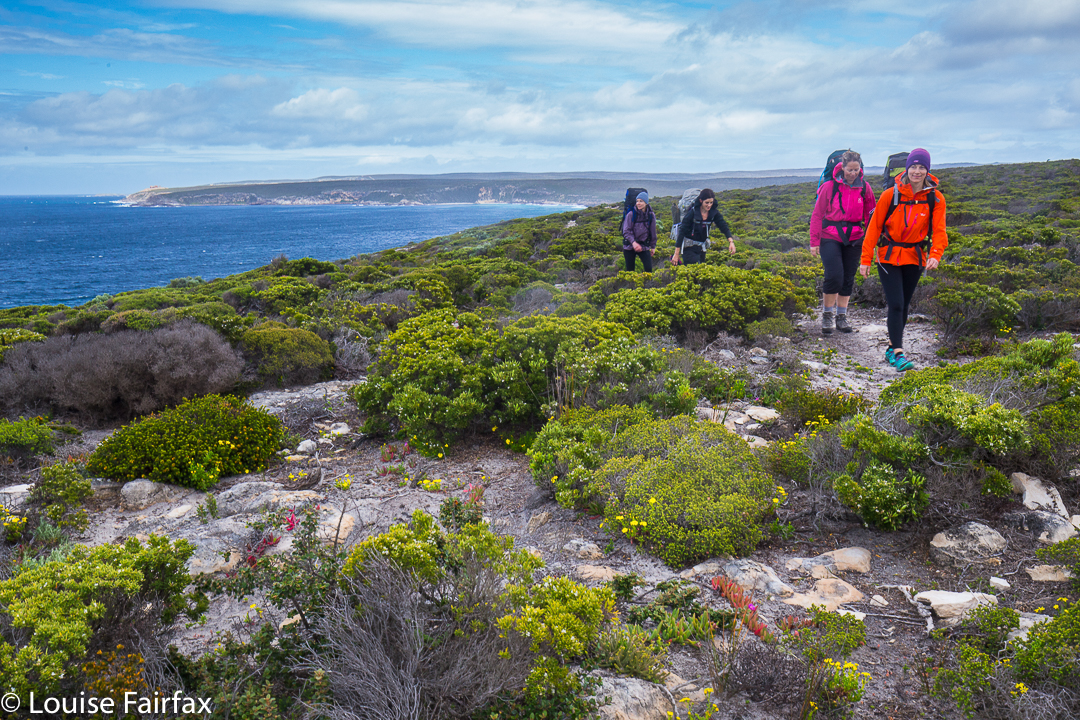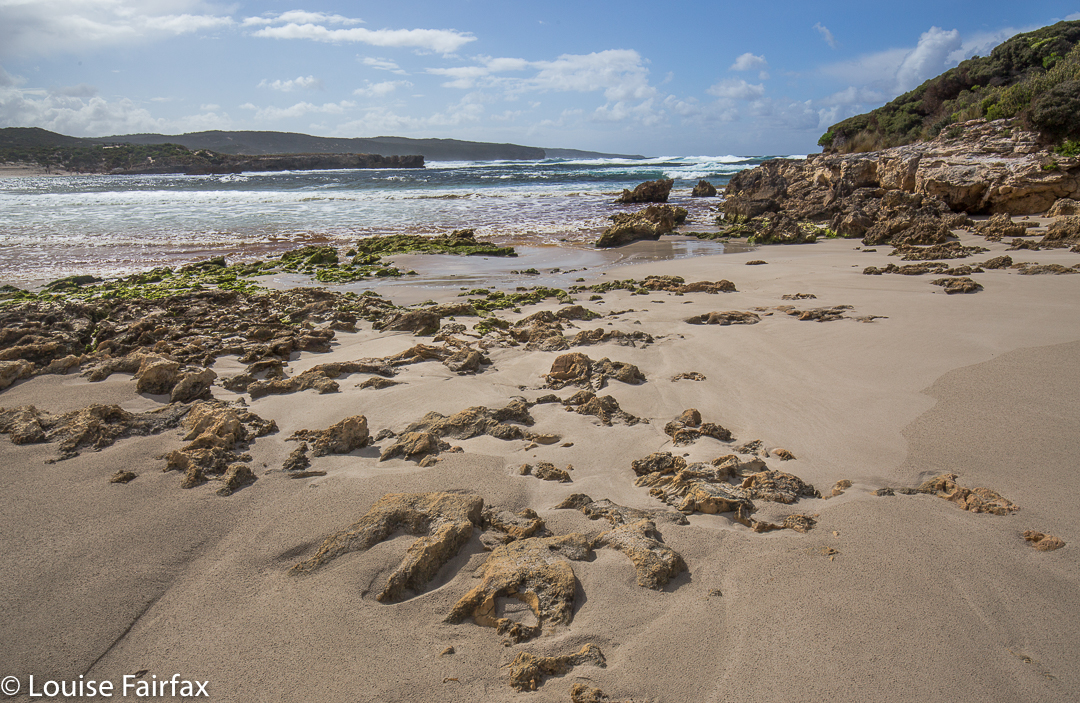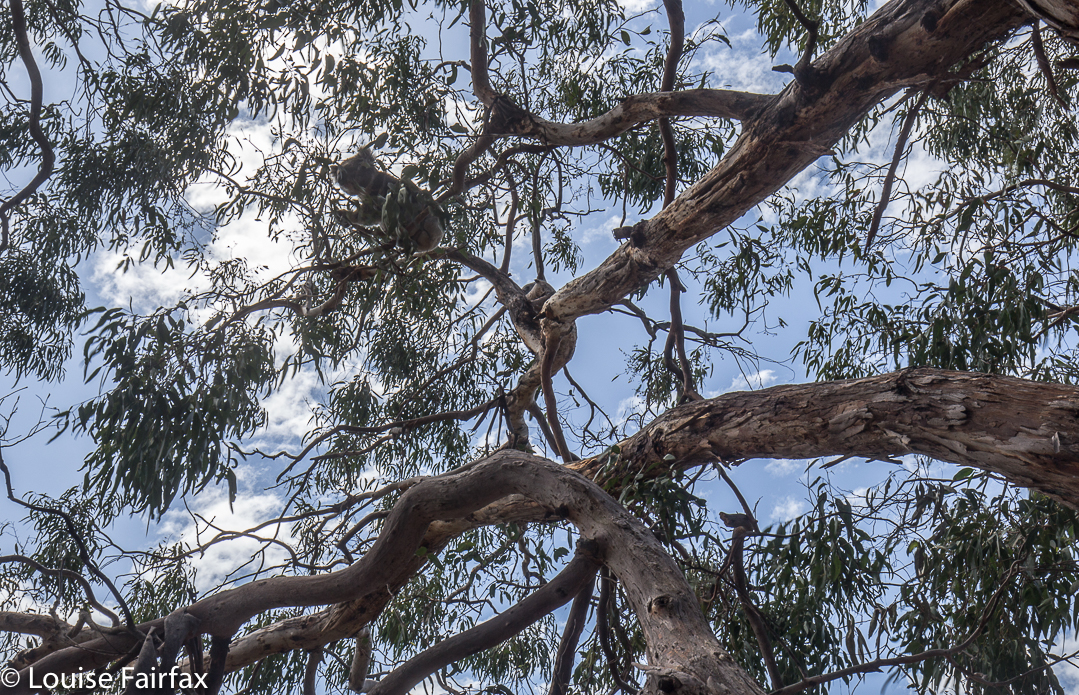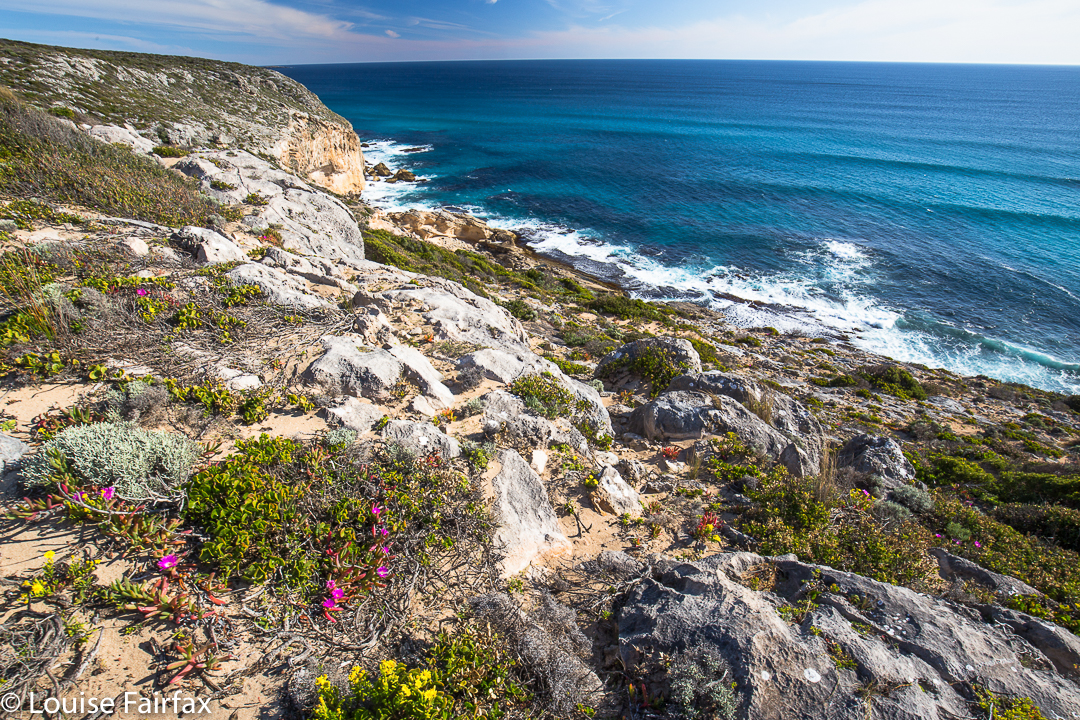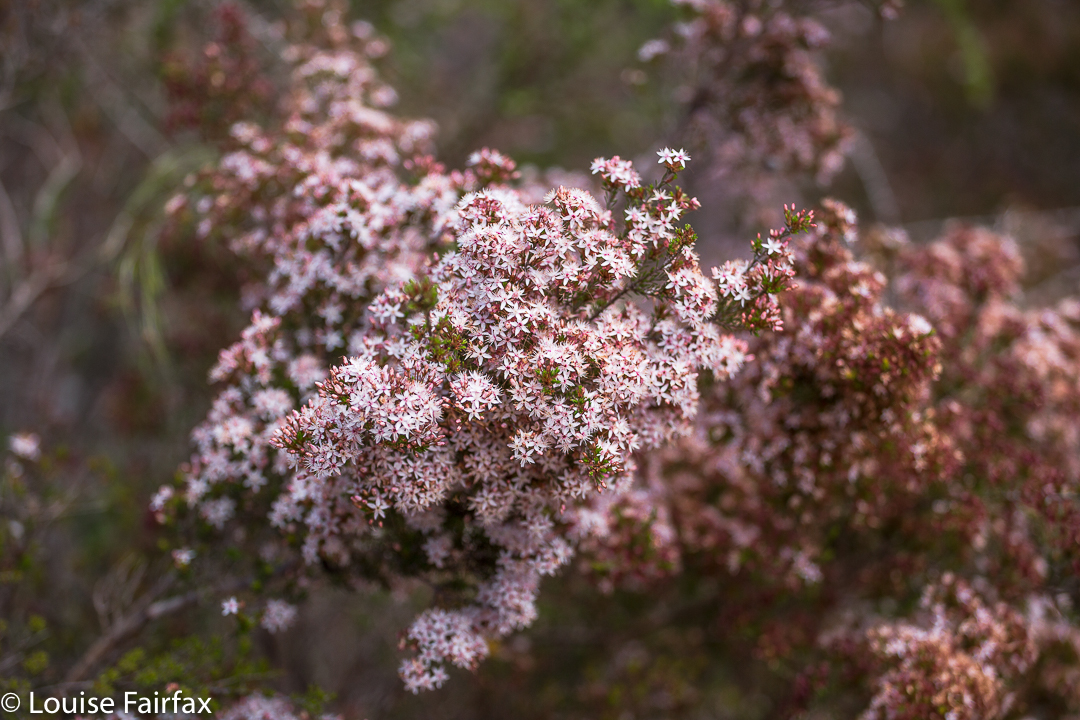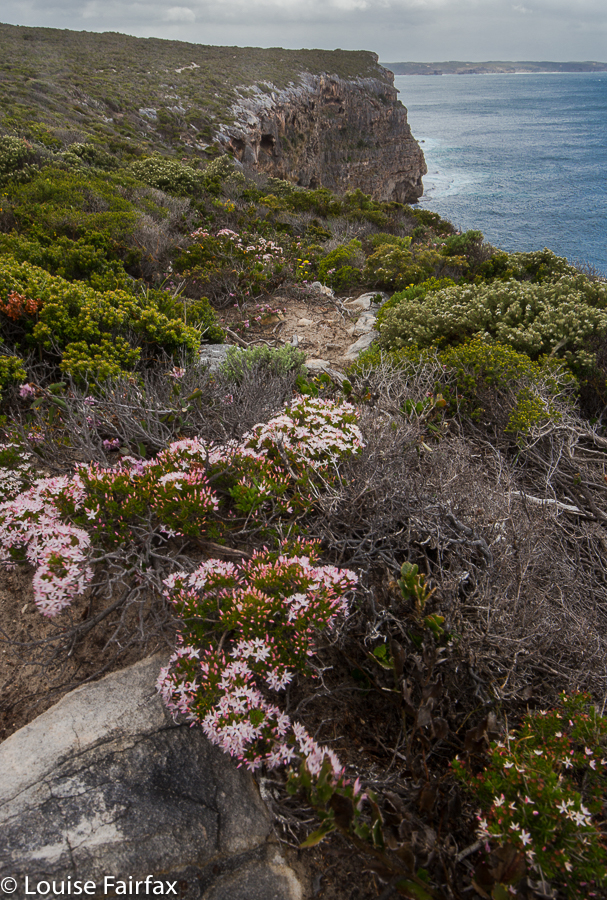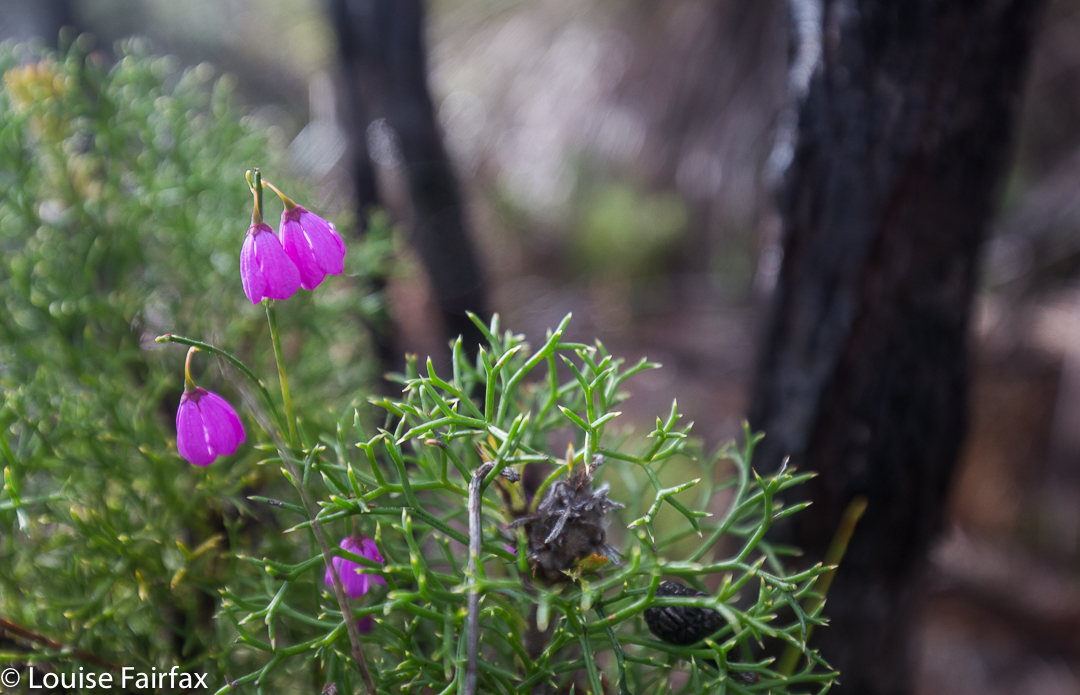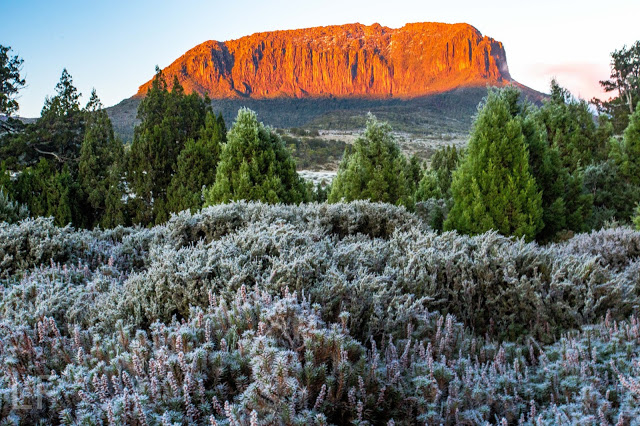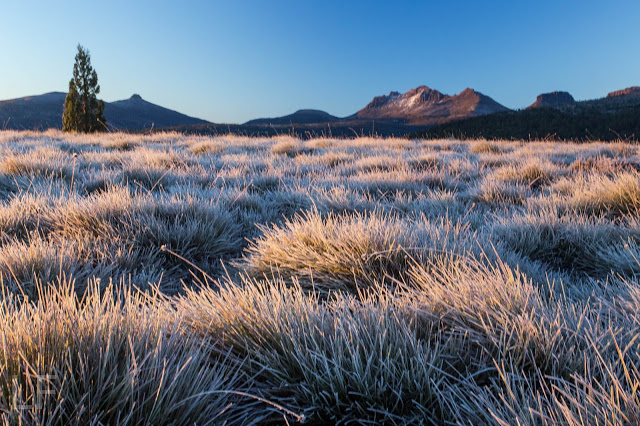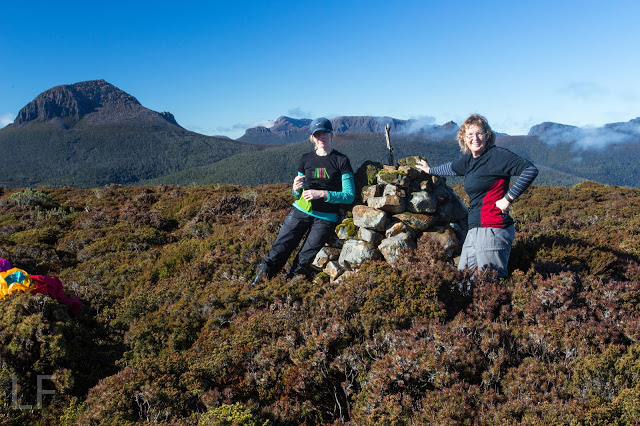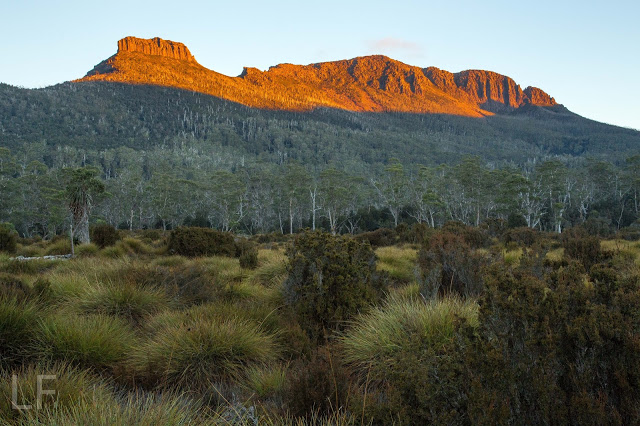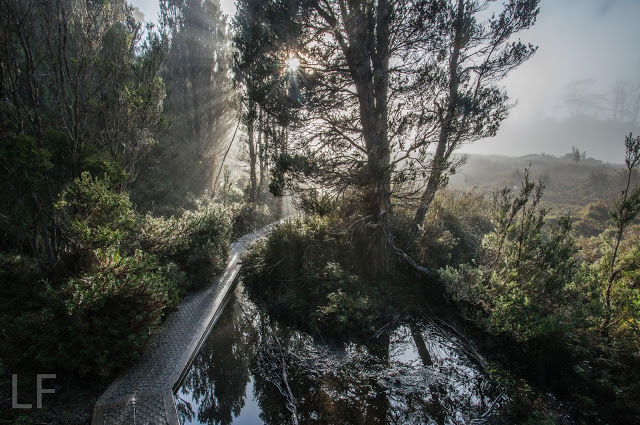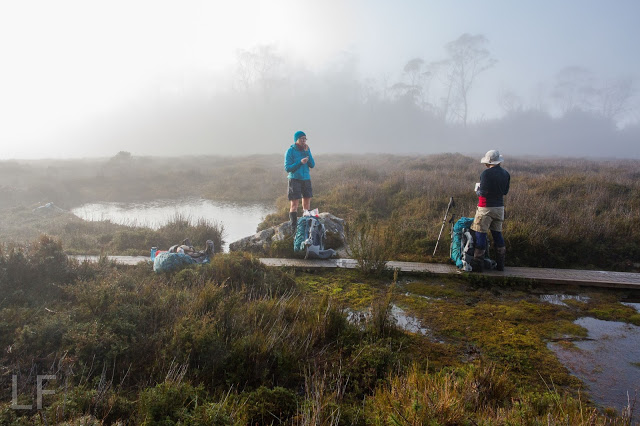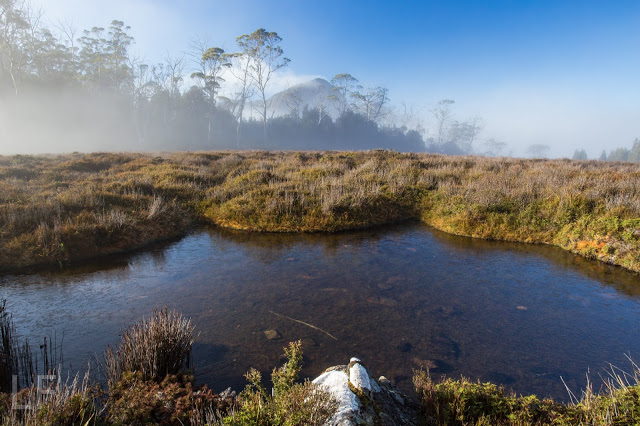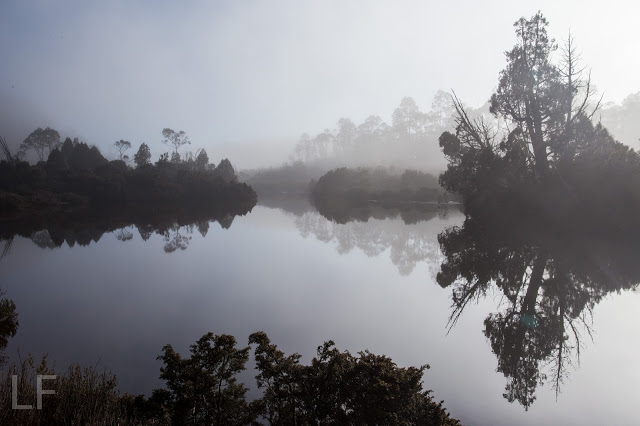Eastern Arthurs II. Federation Peak attempt and East Portal. A personal perspective.
The big one of the Eastern Arthurs, yea, of Tasmania: Federation Peak. Gulp. It’s not the highest, but it is the biggest in stature and in everyone’s minds. Summit day dawned: a white-out. Start time was put back for at least an hour … or more. Whatever it took to give visibility. The air was cold and damp and we appreciated the extra time in our cozy, warm sleeping bags, chatting across the tent space. We’d all eaten and were ready to pull down the tents in minimum time when it became appropriate. I wasn’t impatient. It was not suitable to climb in this.
The call to move came to me like a call for battle. So. This was it. Here was our destiny, which, in a worst case scenario, could be our death. You fall on a certain section of this rock face, and you die. Damit basta. This was, contrary to my original understanding, to be a ropeless climb. No one told me that the rope we were bringing was not for humans, and I had made assumptions. However, had I known, I would still be here, exactly where I was, waiting to see what could be seen; waiting to experience whatever it was that lay directly ahead.
There is no intended blame here. If you don’t know how to tie the right knots, attach a rope properly to a fixture and belay with correct technique, then it is utterly inappropriate to have the responsibility of doing it in a situation such as this thrust upon you. I am merely saying that the absence of this safety net altered my attitude to the climb that lay ahead.
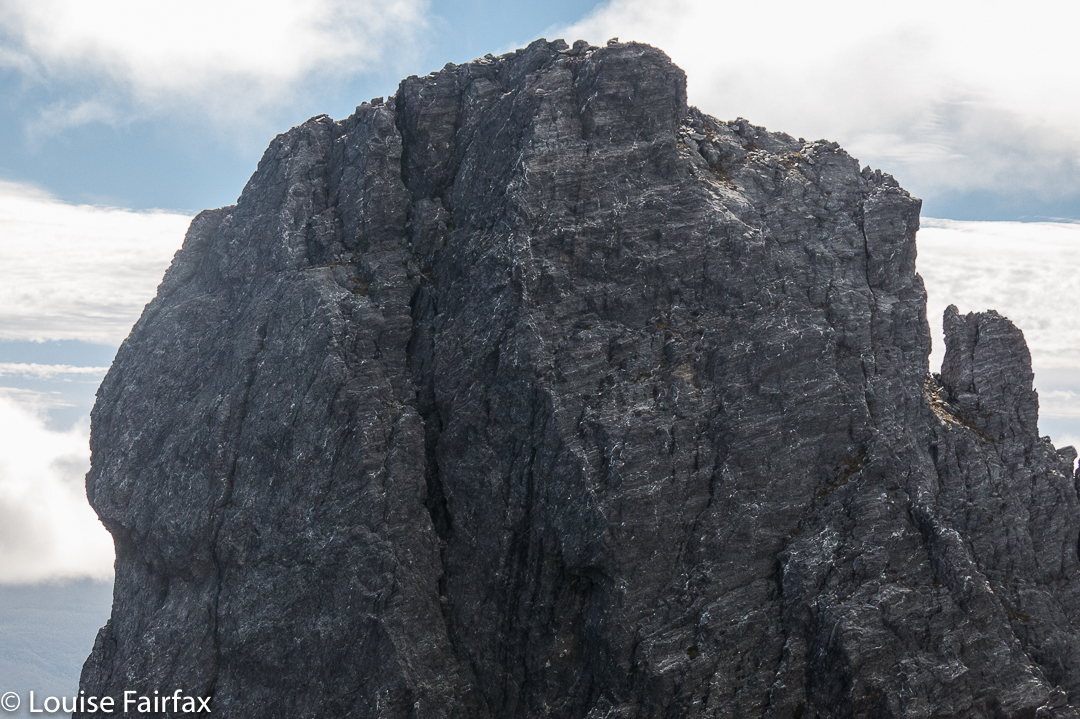 Cute, isn’t she.
Cute, isn’t she.
On we pressed, negotiating our way along the famous (or, infamous, considering the recent death on it) Southern Traverse. In this section, I was actually enjoying the dramatic drops down to the lake several hundred metres below, as there was at least 30 cms of ledge, and that’s plenty for me to be comfy. I was wondering which was the section where the girl fell to her death, but didn’t like to ask.
Eventually, however, we reached a sloped section where a fall would break some minor bone (leg, arm, hip) if you landed badly. You’d be terribly unlucky for anything worse than that, so it was not shatteringly scary, but neither was it a breeze if you enjoy your bones being in one piece, as I do. I realised that for me, any mountain is a prelude to all the ones that will follow, and no one mountain is worth the sacrifice of even a season’s bushwalking, let alone anything worse. The others were being very tentative as they edged themselves down with nothing much to hold on to.
My foot slipped on the wet rock here. I sized up the slope. I could get down without falling, I figured, but to get back up later, I could possibly need some help in the form of a hand from above or a shove from below. I didn’t like the idea of attempting it solo. I also knew in that single moment of slippage that there was no way I was going to trust the rock on the dangerous section that day. This bit was only an appetiser for the main meal. I considered my options. If I backed out now, I could easily return to other, interesting zones and have some fun while I waited for the others, but if I proceeded beyond this point, I’d be a prisoner, possibly bored and cold, playing what could be a very long waiting game. Snap decision. I announced my withdrawal. The leader nodded and on went the group. I perched there, watching for a short while, not particularly sad as I felt I had made the right decision on this day. I will try some other time, when the rock is dry, and when I am in the company of someone who knows how to use rope.
I turned, and climbed the first high thing I came to. I had a fantastic view straight across to the face of Feder (where I searched in vain for my friends). My mountain even had a big summit cairn. Is this mountain ‘Consolation Feder’, I wondered. I tried to phone my family to tell them any danger was behind me. My youngest darling was the only one to answer. She whooped with delight when I told her I was safe and would remain so. Her joy made me happy.
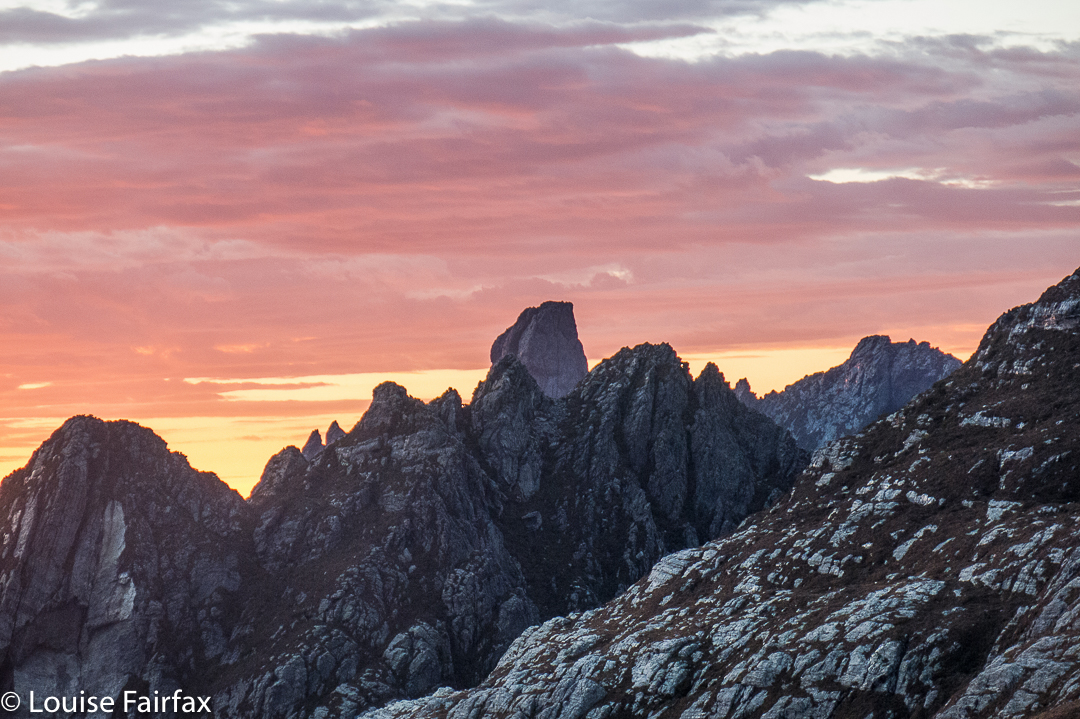 How can you order a morning like this? Feder towering above her neighbours and a pink sky to grace her beauty.
How can you order a morning like this? Feder towering above her neighbours and a pink sky to grace her beauty.
I filled the remaining time climbing an assortment of lumps and bumps in the area, building tiny cairns for each. (Sorry, but not really, purists who don’t like unnatural things like cairns. I’m no engineer and the wind will probably destroy them over time. They’re quite cute, only three tiny stones high apiece).
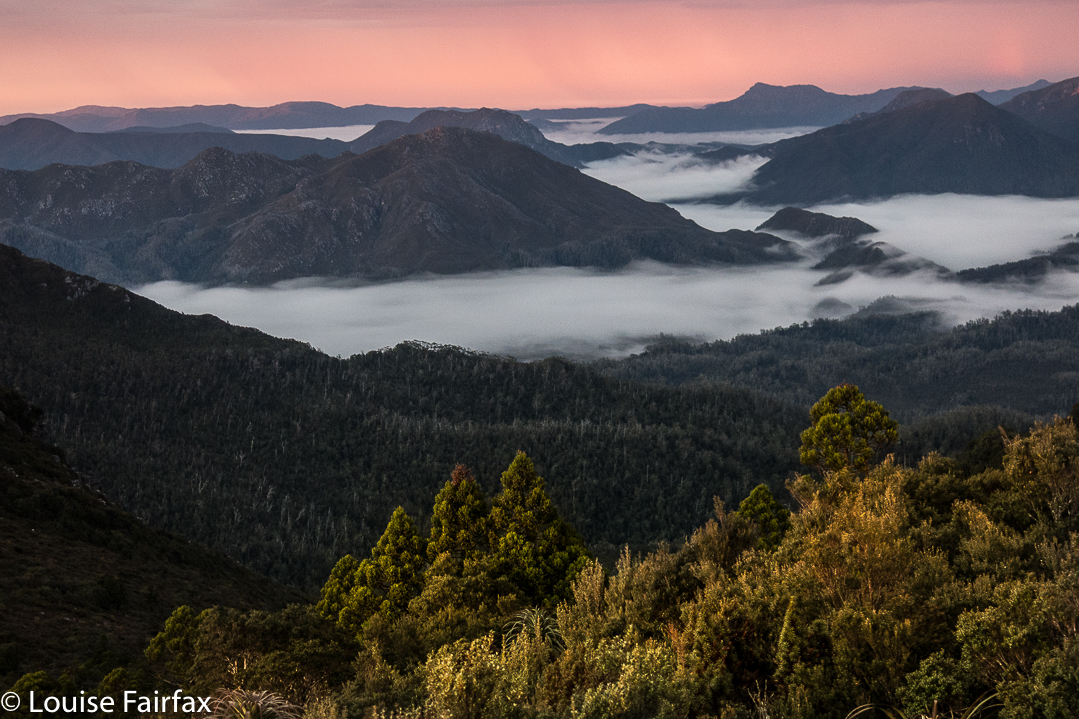 The others didn’t get to the summit either. The water was flowing down the chute of the direct ascent and the rock was slippery and dangerous. The following day, the group going in as we came out, carrying ropes and harnesses, did get up, but the leader slipped and fell, landing – miraculously – on a ledge (not the normal scenario) and breaking his leg. The group was helicoptered off the mountain, lucky to all be alive
The others didn’t get to the summit either. The water was flowing down the chute of the direct ascent and the rock was slippery and dangerous. The following day, the group going in as we came out, carrying ropes and harnesses, did get up, but the leader slipped and fell, landing – miraculously – on a ledge (not the normal scenario) and breaking his leg. The group was helicoptered off the mountain, lucky to all be alive
Back we went to Goon Moor, to a camping area I didn’t particularly like but which serves a purpose. Sunrise and sunset from this spot (well, nearby) were stunning. My camera had stopped working that afternoon, but gave one last fling that enabled the photos below before calling it quits. It has a fairly temperamental opening mechanism. I was more grateful than you can imagine to be given this little reprieve. Louise without her camera is in a far worse condition than a smoker without her fags. I relate to the beauty of the wilderness creatively through a lens, even when, as in an expedition such as this, it has to be a compact one. Anything longer than six days, I need to switch to this smaller, lighter camera. At least it shoots in RAW.
On the final climbing day before the walkout along the plains, we summitted East Portal. Only Angela had done any research on this climb, and she had Chapman’s “wise” words on her phone, viz, that we should follow the rocky ridge around to the summit. This advice is hilarious if you are on the mountain. Short of growing wings, it is useless. We tried left, then right, then left again, further left this second time, down into a chasm and then up, nearer to the ridgeline, but not on it (still to its left). Only at the second last summit of the many points did we get onto what would be the central line of the ridge.
The final climb had a narrow-ledged section of hold-your-breath-and-hope (i.e., some exposure), fierce winds at times, and a very narrow summit area, from which being accidentally bumped off was a distinct possibility. We could see nasty weather coming in from the north. We were very businesslike on top: no groupie photos, no visible joy. It was touch the cairn, take a few shots and let’s get out of there before that rain makes the ledge worse. I thought of Catherine on Federation and wondered how the group was going. I thought the fact that I hadn’t seen or heard a helicopter was a good sign. I guess I was concentrating too hard on our own task, or buried deep in shrubbery at the relevant moment when the rescue was being carried out. Maybe the wind drowned out the noise.
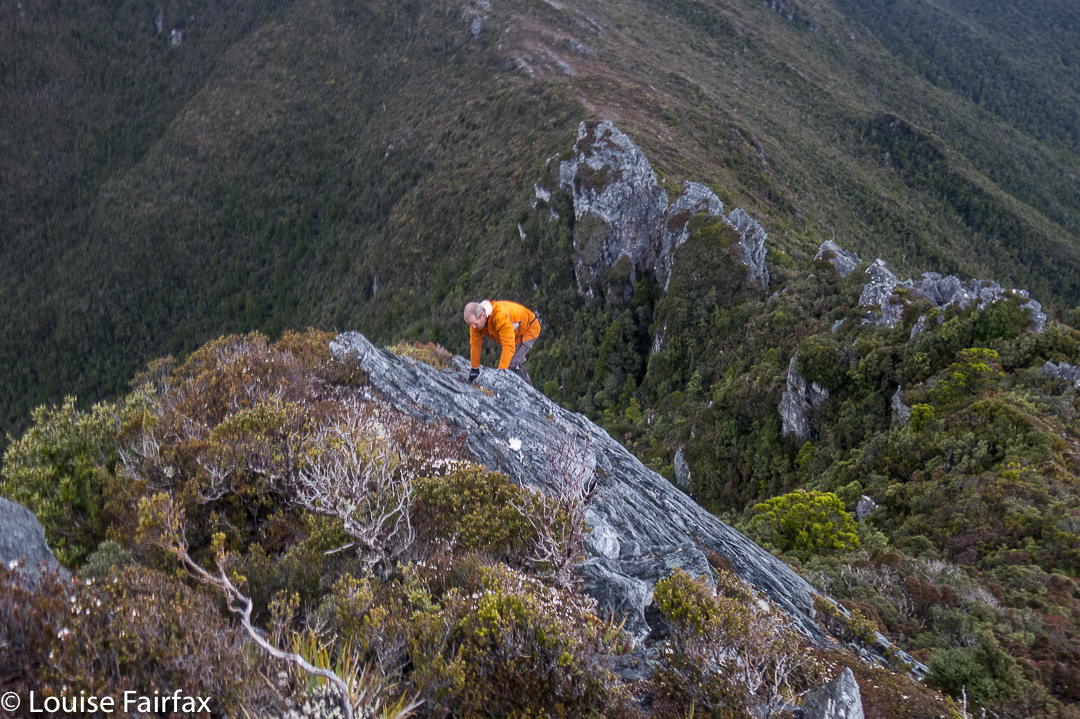 Climbing East Portal
Climbing East Portal
Soon after this ascent, we began the long trip down onto the plains, which marked the commencement of the less-than-thrilling, one-and-a-half days’ walk along the flatness to exit the area. My feet had been wet for a week, and had gone soft and tender and mushy. Big blisters were starting to form underneath. It was SO good to finish and take those wretched boots off.
I ate like Miss Piggy at the Possum Shed, delighting in food that had a recognisable taste, and revelling in cappuccino and home-made cake.
